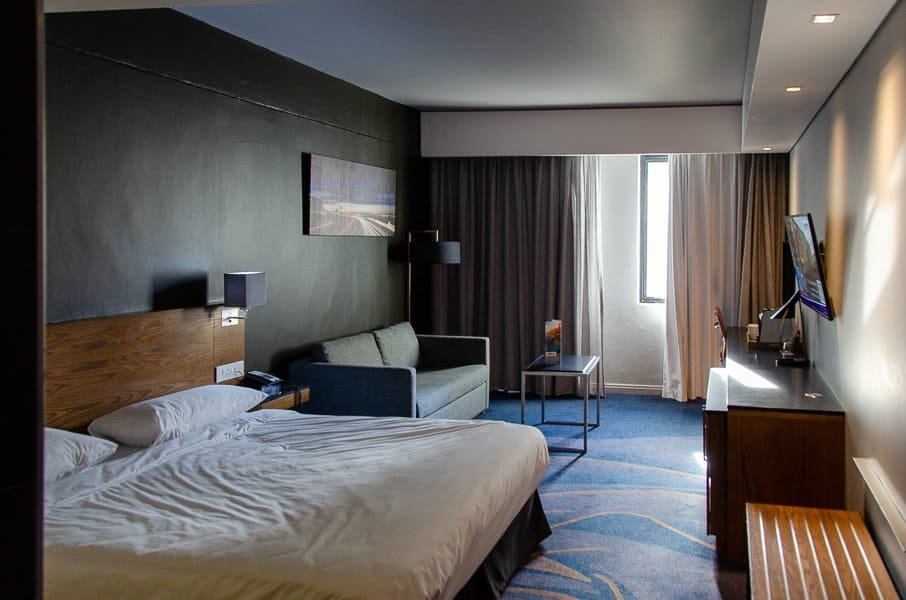At the risk of repeating myself, South Africa is a cracking place to rent a car and head off exploring. Each time I get the chance, I try to discover different parts of the country and a few years after an epic journey through Mpumulanga, KwaZulu Natal and the Battlefields area, I was itching to get behind the wheel one again.
On this occasion I would be starting from Cape Town as I was attending WTM Africa, and I set up my flights in such a way that I had a couple of weeks before the event to venture into some of the less-visited areas of the Western Cape.
I should qualify that sentence – and the title of the trip report – by saying that I also visited some well-visited parts of the region, but I stand by both as this itinerary is not your bog-standard “Cape Town, Winelands and the Garden Route” circuit that any travel agent can sell you off the shelf. I planned this route as the basis for one of our own self-drive tours and wanted to provide first-hand experience to help clients decide if they would like to follow in my tyre tracks. If you would, the tour itinerary is now available.
CLICK HERE FOR THE COMPLETE ONLINE TOUR BROCHURE FOR THIS ITINERARY
So let’s get started.
Cape Town
I arrived in the Mother City in the afternoon and collected my vehicle at the airport. I drove straight to my hotel for a night’s rest before beginning the road trip the following morning. My plan was to have dinner there and go to bed relatively early as I was still tired after the long journey from Norway.
Having stayed at this Park Inn before, I knew it to be excellent value with its own parking garage so it was an easy decision to book it again.
Accommodation: Park Inn by Radisson Cape Town Foreshore
Perhaps the only negative point about this hotel is its unwieldy name…we’ll call it the Park Inn from here on in…
I had a standard room for my brief stay, which was spacious and with everything I needed.
The bed was big (as they all seem to be in South Africa) and very comfortable.
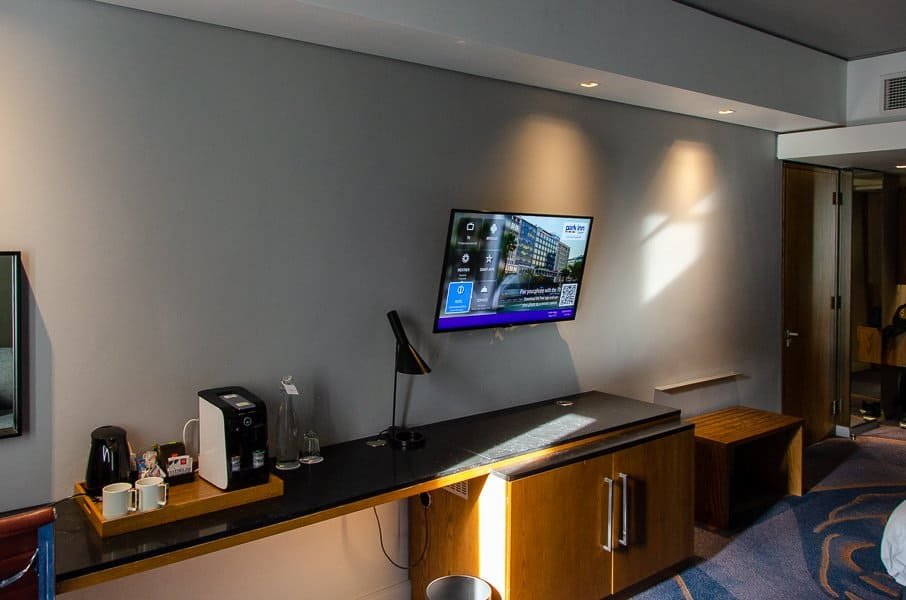
A coffee machine is a major plus in my book, as is plenty of storage space.
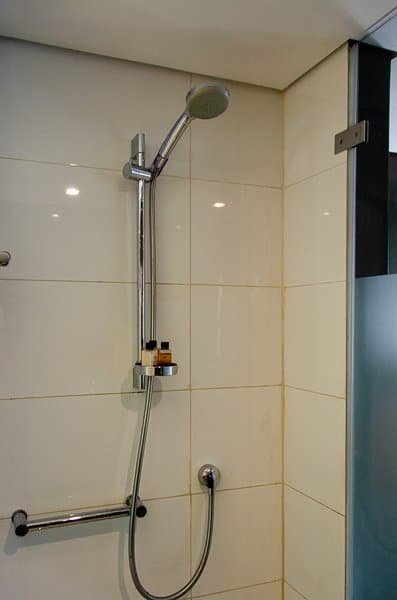
The bathroom featured a large shower area and the water pressure was great. Toiletries were provided.
So far, very good. The hotel has a couple of extras which I really appreciated – a good fitness room with the usual range of machines that can be accessed 24/7 and a rooftop bar and restaurant with stunning views of Table Mountain.
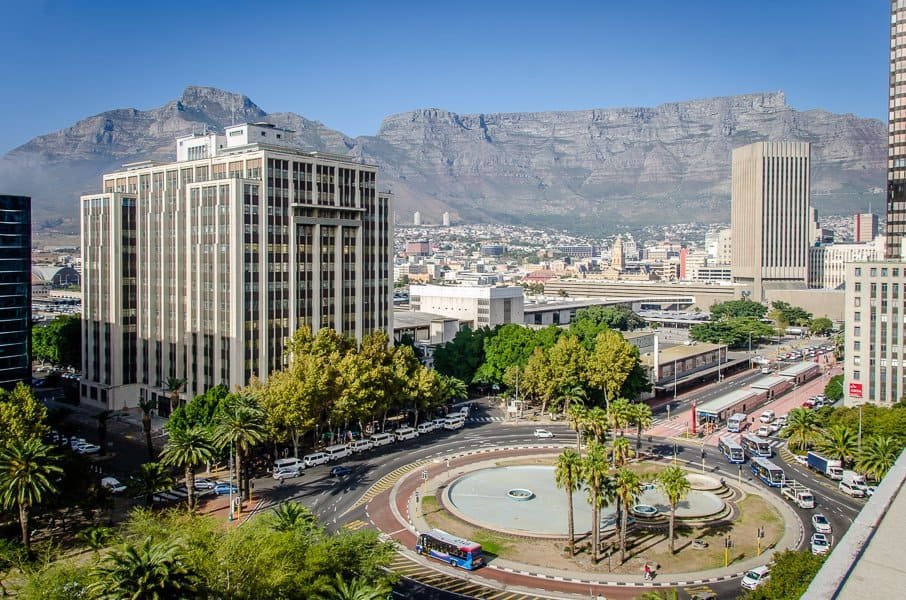
See what I mean?
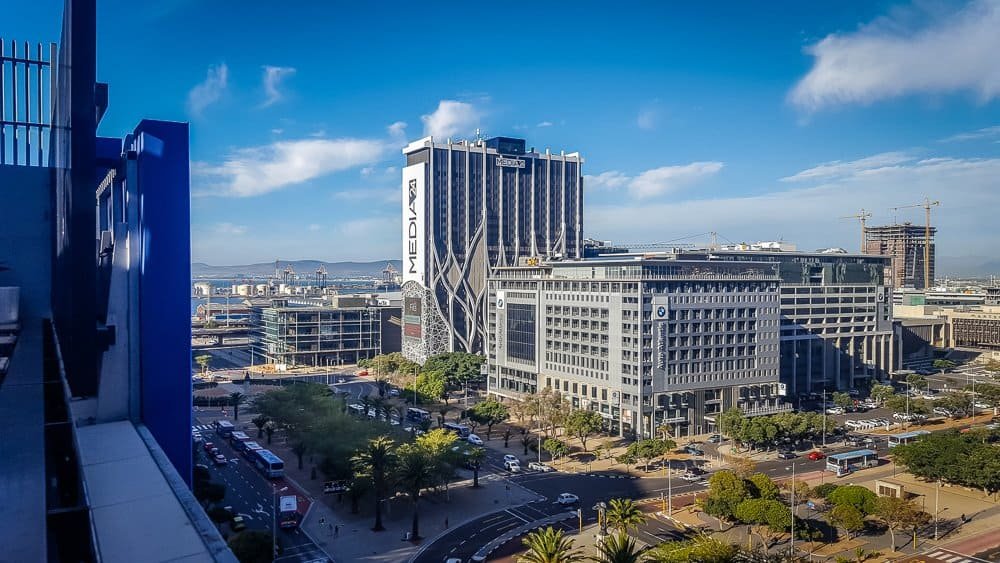
In fact the views in both directions are great. I had a pizza for dinner with a couple of cold beers as the sun set. A perfect way to enjoy being back in Africa once again.
After a refreshing night’s sleep and a fantastic buffet breakfast with a la carte hot dishes, I packed my bags and took the lift down to the parking garage. Before leaving I got everything set up: duffel bag in the boot, camera bag on the passenger seat, SatNav in place, mobile phone connected via Bluetooth and Spotify ready to go.
I entered the address of my next destination into the Garmin, put my shades on and cranked up Metallica to 11. It was time to hit the road and head for the very tip of the continent.
L’Agulhas – the southernmost tip of Africa

A lot of people staying in Cape Town make the journey to Cape Point and a lot of them believe that they are visiting the furthest point south in Africa. That’s a big mistake, as the actual southernmost point is about 70 km further south at L’Agulhas; this is in fact the tip of the Cape Peninsula. That being said, there is plenty to see and do at Cape Point making it a worthwhile excursion from the city.
But I digress – L’Agulhas is where I was headed. The town itself is rather mundane and usually battered by strong winds, but the urge to tick the southernmost point of Africa off the list is strong for most people, myself included.
I booked a room for the night so that I could relax after the drive from Cape Town and reached the town after a fairly unremarkable 3 hour drive.
As mentioned, the town has little to offer and is mostly made up of holiday homes. There are a few cafes and a couple of restaurants, a small supermarket and a souvenir shop. Many of these close early, so bear that in mind.
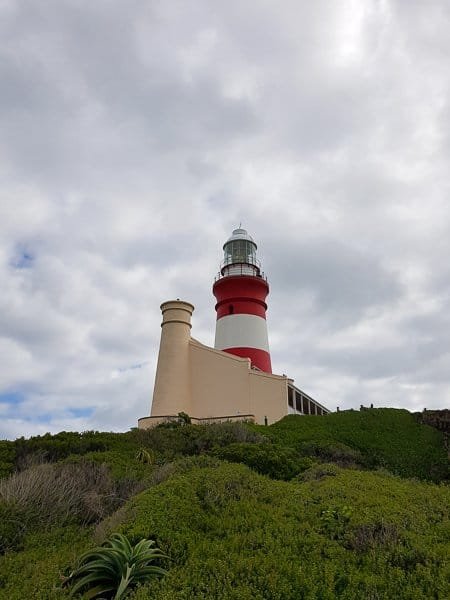
I checked in to my accommodation and left my bags in the room before driving the short distance to visit the tip of Africa. I passed Agulhas lighthouse after which the road continued for a kilometre or so and stopped in the car park.
Continuing on foot, I passed the information board.
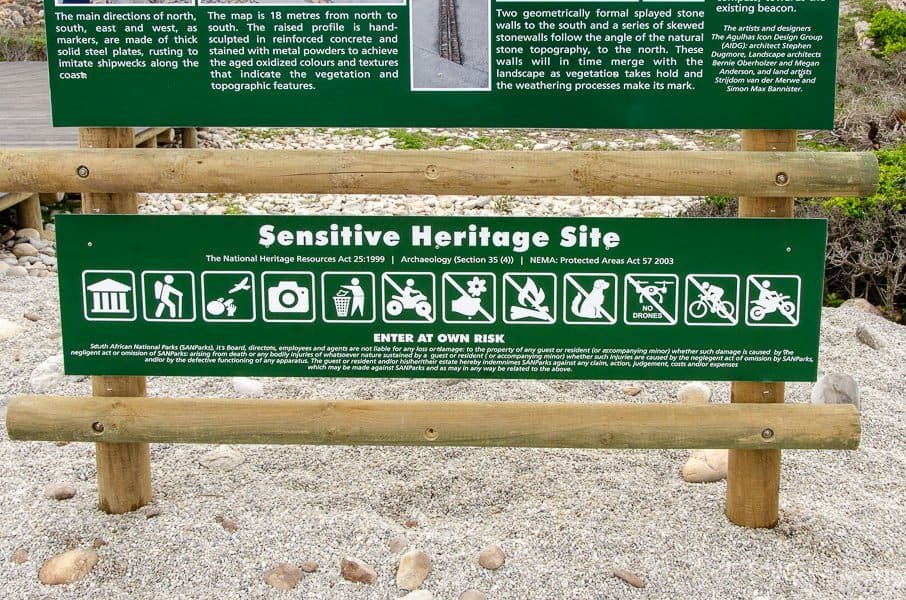
I was pleased to see that a new monument had recently been built and indeed officially opened just ten days before I got there.
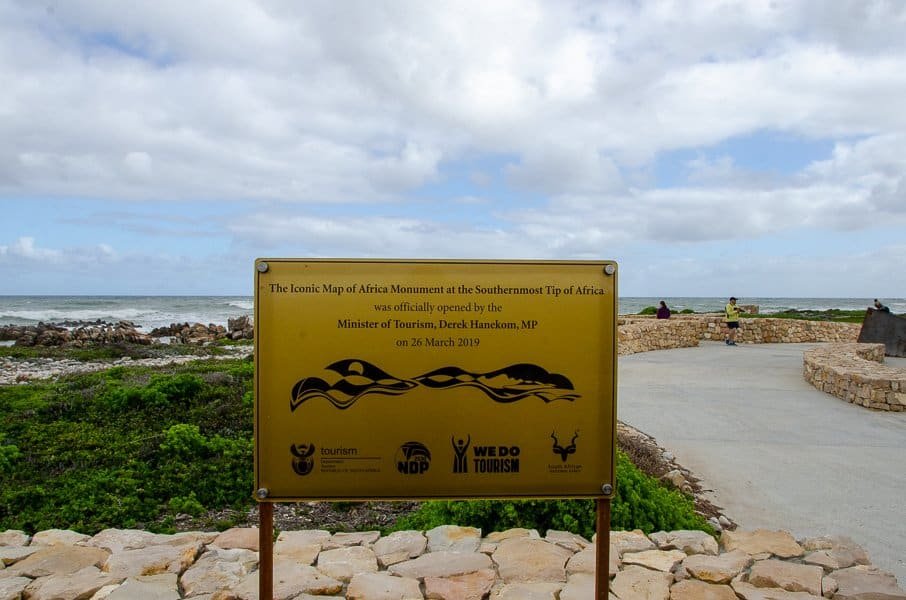
It’s a very impressive monument, too – a large map of Africa showing the topography of the continent in great detail.
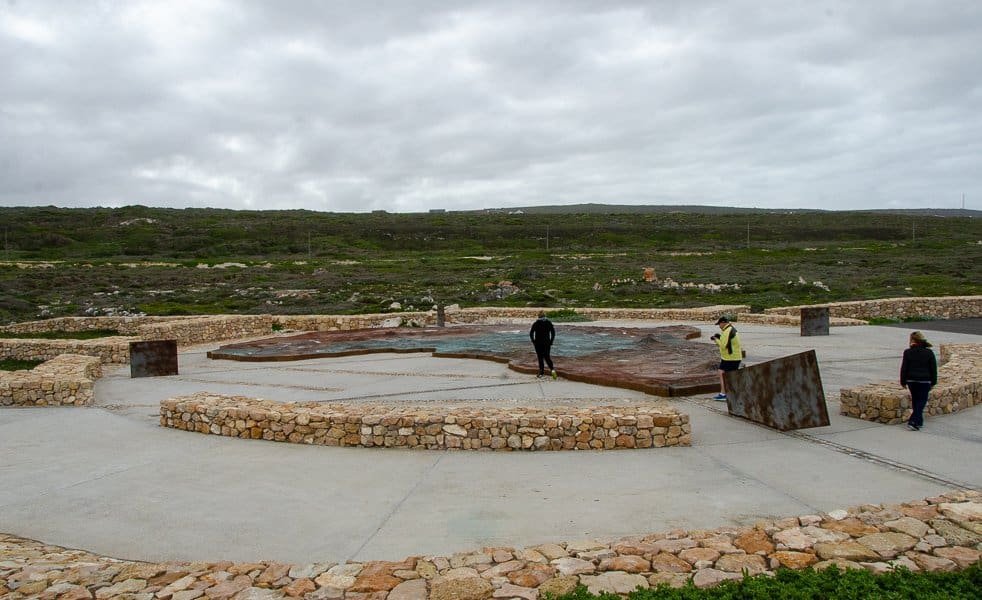
The four compass points are clearly marked, and a path leads due south to the waterfront.
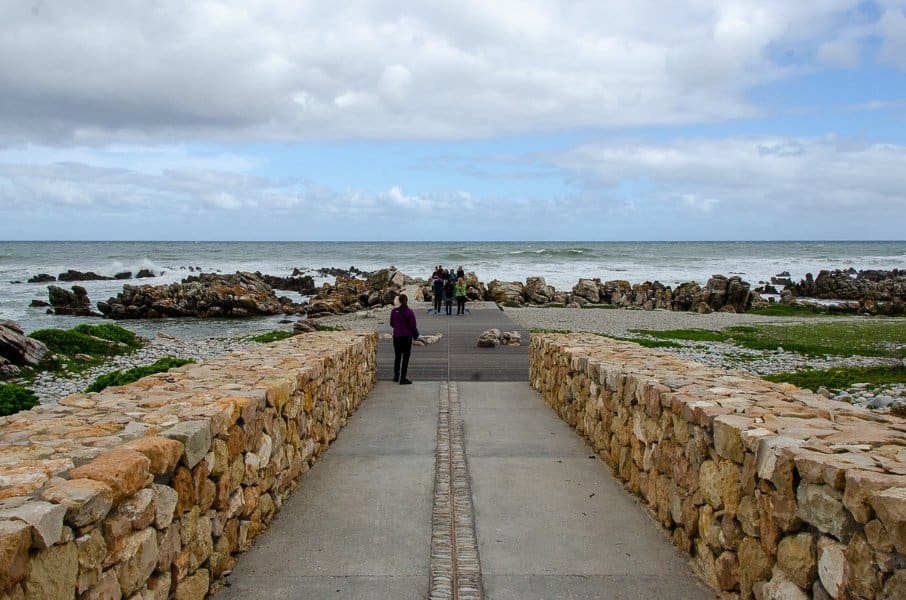
This is where you will find a plaque marking where the oceans meet.

Of course there is a great photo opportunity to stand with one foot in each ocean…
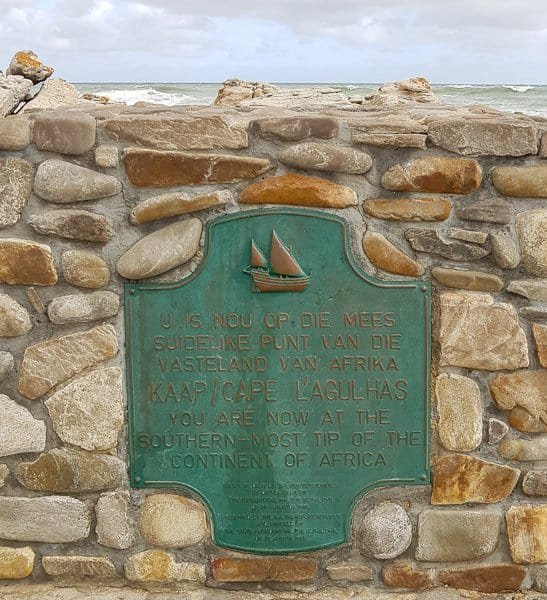
And there you have it – now you just need the easternmost, northernmost and westernmost tips to complete the set.
Photographs duly taken, I returned to the car and drove back to the guest house, stopping off for supplies for dinner at the supermarket.
Accommodation: South Point Self Catering and B&B
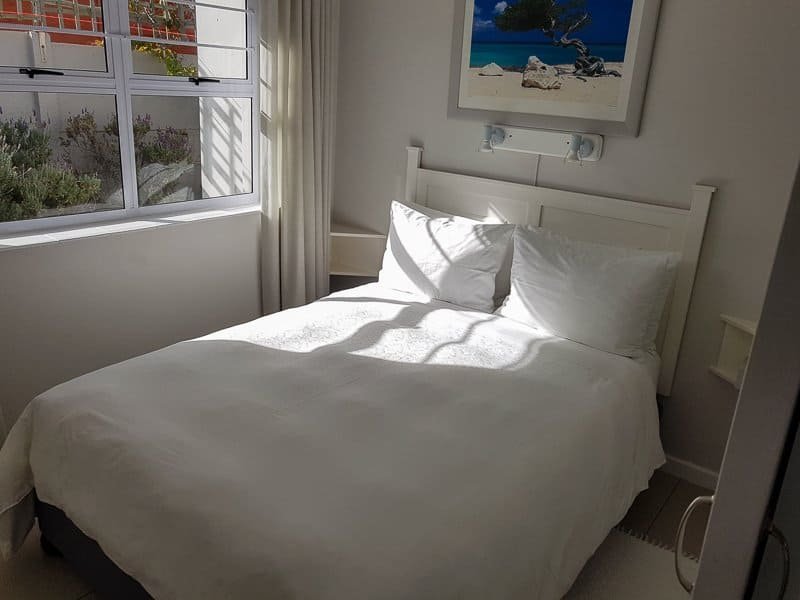
South Point is a small, personal and friendly establishment consisting of six well-appointed self-catering units, in a sheltered court-garden setting. Situated on the main road and 100 metres from the gates to the Agulhas National Park, there are not many places to stay which are closer to the southernmost tip of Africa.
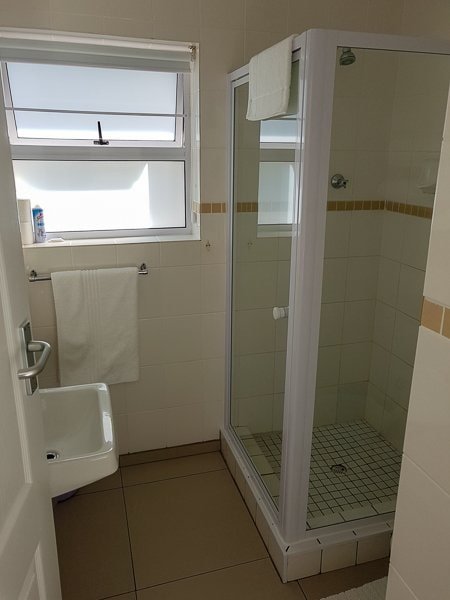
The units come with everything you need.
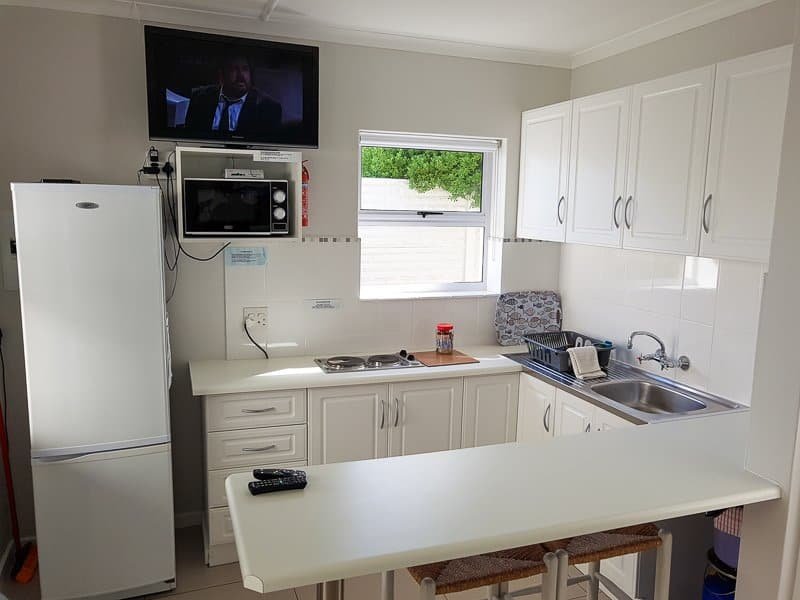
Each has a full kitchen complete with all utensils and both a hob and a microwave.

You can also relax on the sofa and watch TV if you so desire – the full range of satellite channels are available.
I found South Point Self Catering and B&B to be the perfect place to stay in L’Agulhas for those catering for themselves and would definitely recommend it.
Route 62
Most people travelling east from Cape Town follow the Garden Route along the coast. However, at the Grown-up Travel Company we cater to the other people: those looking to explore less touristy areas with more interesting and uncrowded sights. For us, Route 62 is the way to go.

This also stretches from Cape Town to Port Elizabeth, but via dramatic mountain passes and through the spectacular landscape of the Klein (Little) Karoo. The Little Karoo is a 290km strip of semi-desert that runs along the edge of the vast wilderness of the Groot (Great) Karoo.
Coming directly from Cape Town, you would normally join the R62 at its western end near Robertson, after which Route 62 runs through the Langeberg Mountains to reach Montagu. The road continues east through the Little Karoo, passing through Barrydale, Ladysmith and Calitzdorp until it reaches Oudtshoorn. From there you could head north across the Swartberg Mountains to the Great Karoo, or south to George and the Garden Route.
The Little Karoo is characterised by huge areas of open land but also farms, vineyards, mountain ranges with twisting passes. You will also find several charming dorps (rural towns) each with plenty to offer the more adventurous visitor.
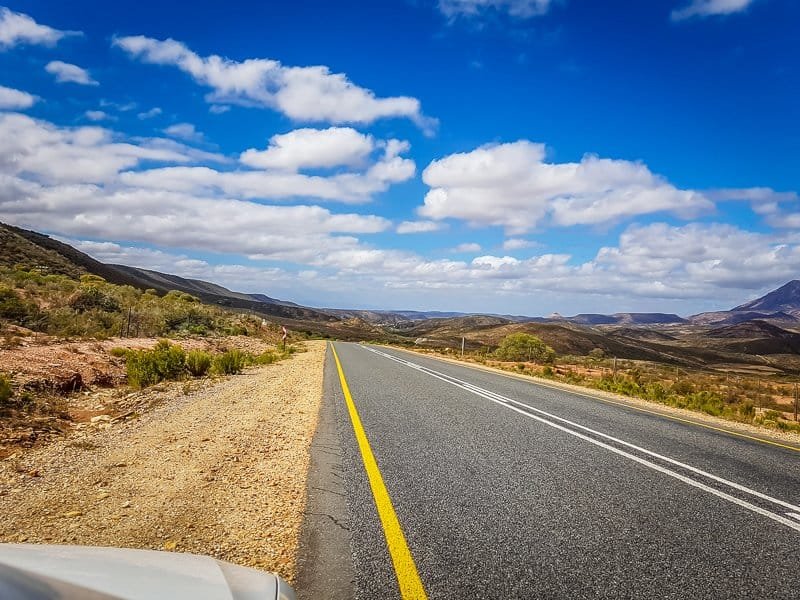
Not a tourist bus in sight – now that’s what we like. Not many vehicles at all, to be honest…
On my trip, I drove north from the southernmost tip of Africa, through the town of Bredasdorp and followed the R317 to Stormsvlei where I stopped to for lunch.
The terrain is flat as a pancake for quite some time north of L’Agulhas, the road is almost dead straight and the landscape becomes increasingly arid as you head closer to the Karoo. By the time I reached the T-junction marking the beginning of the R62 to the east, I was driving in a valley between steadily more scenic hills.
Not long afterwards, it was time for my first mountain pass – Kogmanskloof. It’s a gentle introduction but dramatic nonetheless, bringing me into the Little Karoo proper (at least as defined by most people; there’s no official demarcation of the area).
It also brought me to the very pleasant town of Montagu, where it was time for a break.
Montagu

Image (c) Montagu Information https://www.montagu.org.za/information/
There are several reasons why you might want to spend a night or two in Montagu. It is probably best known for its hot springs although it is also a haven for hardcore rock climbers – the cliffs here are some of the most challenging in South Africa. It is also a major fruit growing area and the peaches and apricots are both tasty and cheap as chips in the summer.
It’s a great base for walking, with several marked trails. If that seems a bit too much like hard work you can book a tractor ride to the top instead.
And Montagu is also a very pretty town with very attractive Victorian buildings.
Oh and I found a brewery, which is a bonus.
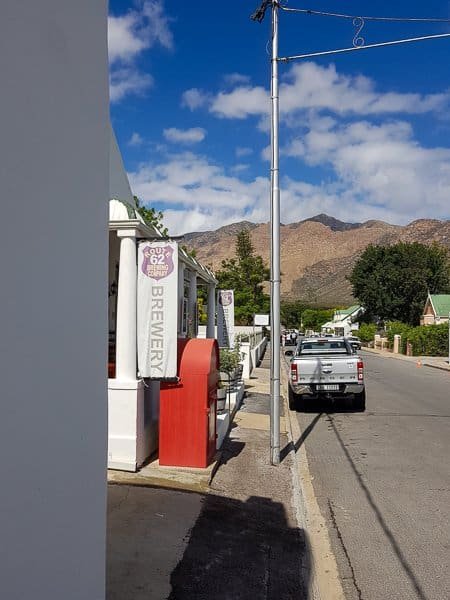
I basically stumbled upon the Route 62 Brewery (I believe I have a bit of a sixth sense for this kind of thing) and was glad I did. It had been a long drive and wasn’t over yet, and it was very hot too.
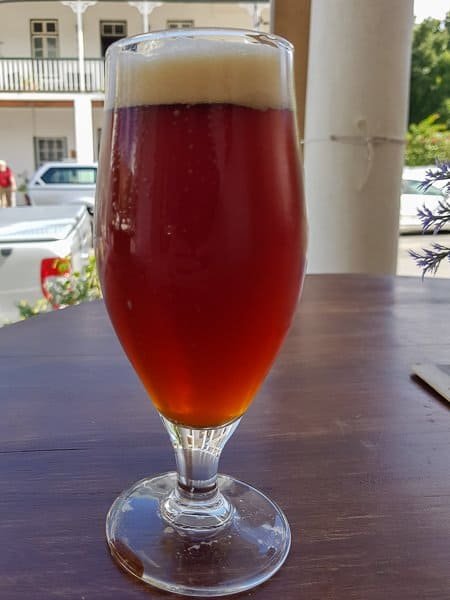
A lovely cold beer right from the brewhouse went down a treat with a light snack from the menu.
I felt restored and ready to continue after a look around town, and regretted that I hadn’t included an overnight stay in Montagu. I will make sure the town is included as a recommended stop on our itineraries.
Barrydale
A pleasant 40-minute drive further east, during which the road began to slowly climb, brought me to another Route 62 favourite, Barrydale.

Image (c) Barrydale Information https://www.barrydale-info.co.za/
Barrydale is also worth a night or two, depending on how much time you have. Furthermore it is a good place to stop and eat at one of the many cafes and restaurants.

Photo credit: Pranav Bhatt Route 62, Barrydale, Western Cape, Southern Africa via photopin (license)
Diesel ‘n Creme is very popular, serving great food, cold drinks and with plenty of fun decor to feat your eyes on.

Photo credit: chericbaker Route 62 Diesel n Creme via photopin (license)
Barrydale itself is a lovely rural town offering a glimpse into real Karoo country life. The main road has vineyards on both sides and the place has become popular with artists escaping the hustle and bustle of the big city. As you’d expect there are a number of arts and crafts shops and galleries, but there is also a good range of excellent restaurants and a couple of appealing accommodation options.
Barrydale is definitely a place to relax and switch off – something we could all benefit from now and again. It is also an option on our self-drive itineraries.
But I had to move on, and the next stop was a legendary South African one.
Ronnie’s Sex Shop
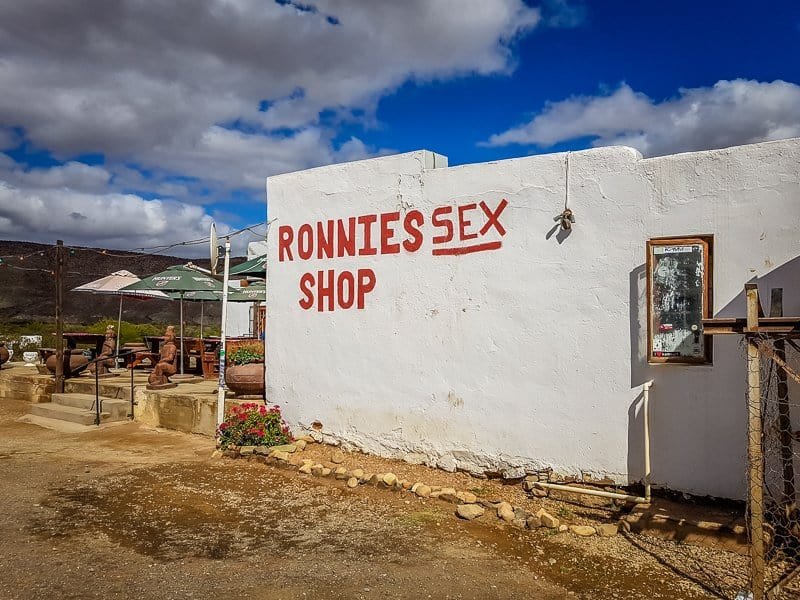
Yes, I know it sounds like a weird place to visit but trust me on this one. Oh and it’s not a sex shop, just to get that straight.
Slap bang in the middle of nowhere on Route 62 and calling itself the “oddest pub in South Africa,” Ronnie’s Sex Shop is indeed odd. With a ceiling covered in underwear and that name which came from a practical joke, it’s also a magnet for travellers from all over the world.
Back in the 1970s, Ronnie Price decided to open a farm stall by the road to sell his fruits and vegetables. Not wanting to confuse punters, he painted “Ronnie’s Shop” in red paint on the white facade of his roadside cottage.
But for a laugh (you have to make your own entertainment out here in the bush) a few of Ronnie’s mates changed the signage by adding another word and thus “Ronnie’s Sex Shop” was born. At first, Ronnie wasn’t amused by the prank, but when another friend suggested he open a pub, he saw a golden opportunity to use somewhat more imaginative marketing than originally planned.
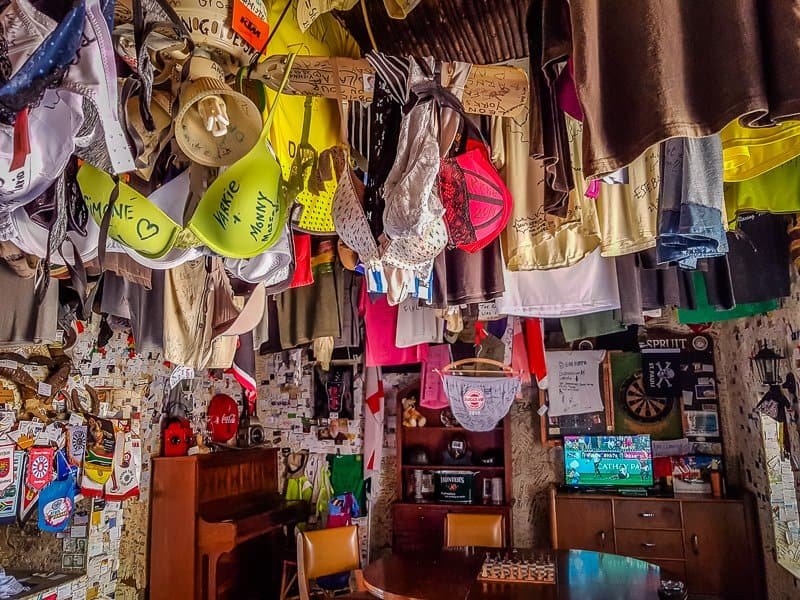
He converted the farm stand into a fully stocked bar, serving coffee in the morning and booze at night. He presumably figured that if he built it, they would come. And they did. The countless bras – most of which are signed – hanging from the roof testify to the vast number of visitors Ronnie has welcomed. The rest of the decor is just as strange, with baby dolls, teddy bears and clown wigs scattered around.
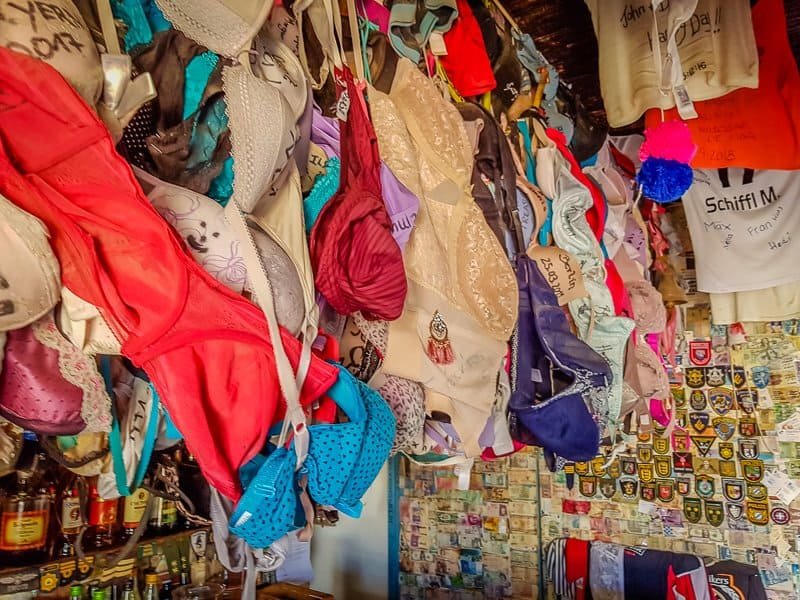
Ronnie still runs the bar and is always up for a chat and a joke, and I was pleased he was there when I passed by. I should have brought a pen to add to the graffiti covering the walls – or perhaps a pair of underpants to leave behind? I spared him that and after swapping some tales with the man himself I set out on the road again. Apparently he has some accommodation if you really want to make a night of it – which is popular given that there is nothing else out here.
Next time…
It’s another hour or so from Ronnie’s to Calitzdorp – two if you stop to take photos and admire the view at regular intervals.
My driving for the day was nearing its end and the scenery was getting better and better as the valley narrowed and the road climbed.
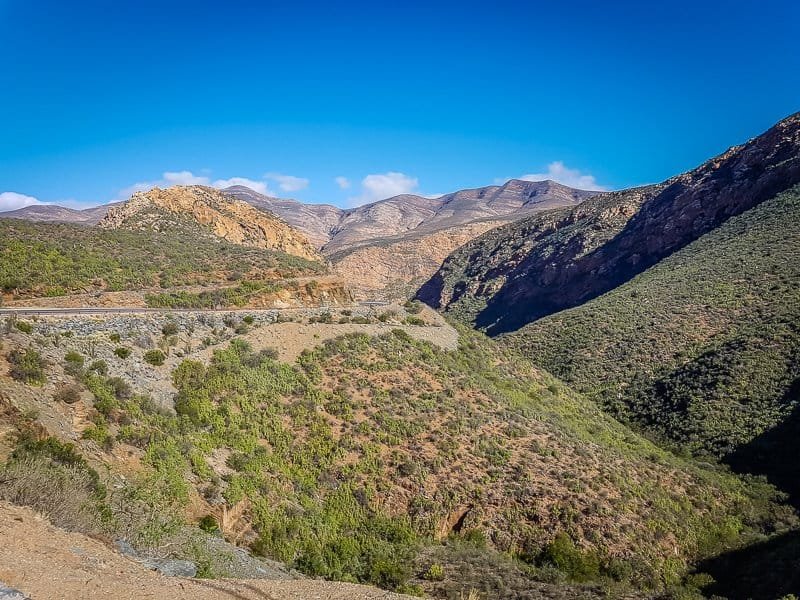
Calitzdorp
Calitzdorp is (another) quaint little town on Route 62, nestled in the heart of the Klein Karoo. It’s a sleepy dorp but is known as the port wine capital of South Africa, due to the quality of the port wines made by the local wine cellars. More importantly – for me at least – top quality reds and whites are also produced in Calitzdorp mainly at the Boplaas, De Krans, Axe Hill and Calitzdorp vineyards.

The historic buildings of the town centre are well preserved and it’s a delightful place to wander.
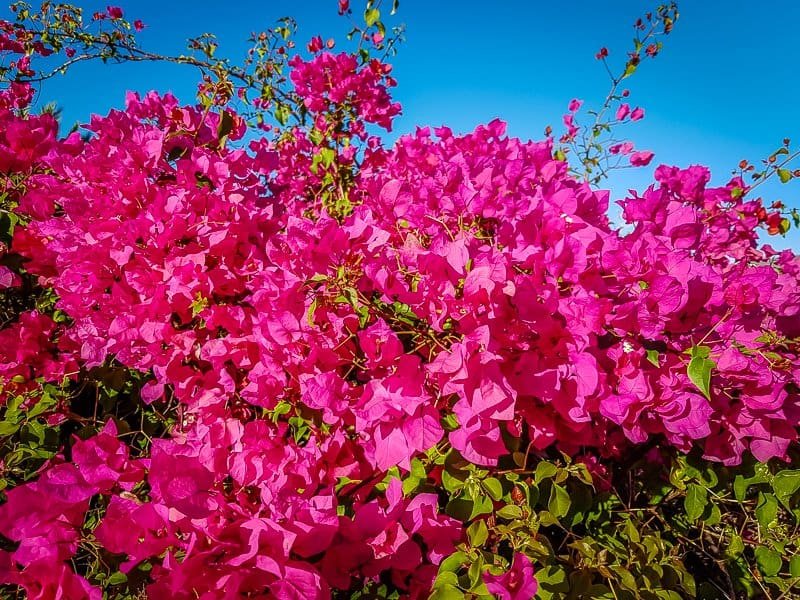
It’s a colourful place, too.

Many of the houses are beautifully restored and decorated with stunning flowers.
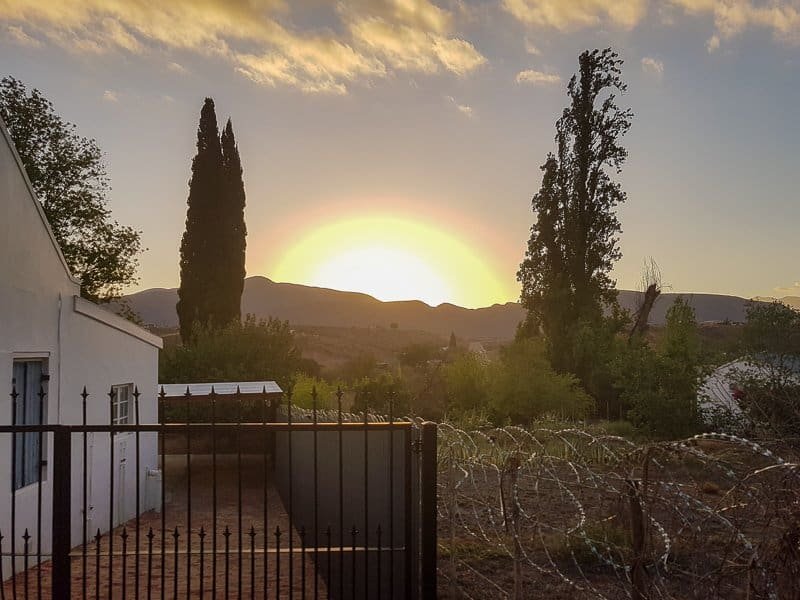
Sunsets ain’t too shabby, either.
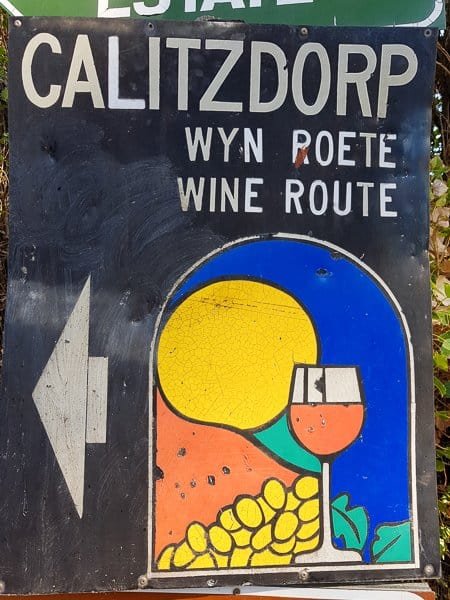
If you want to visit several of the vineyards there is a well-signposted wine route connecting them – you can grab a map at the tourist information office or from most hotels and guest houses.
I restricted myself to just one.
De Krans Vineyard
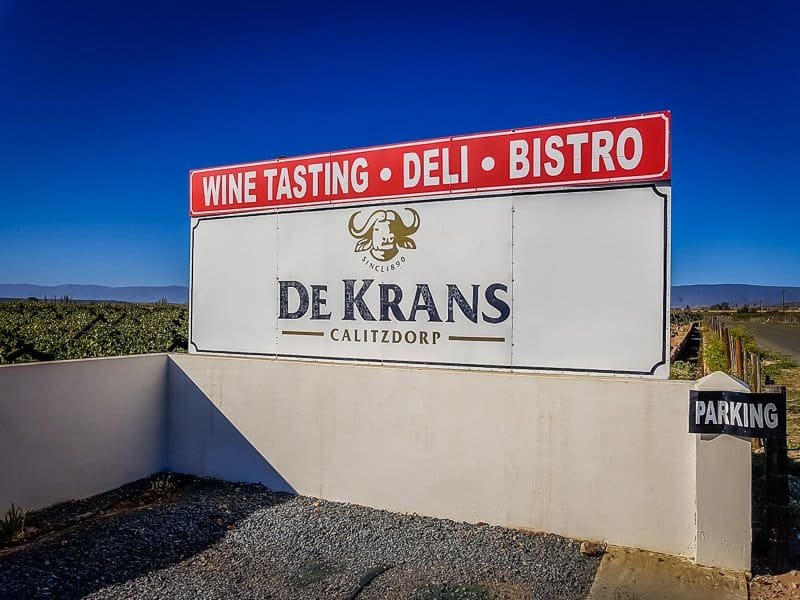
Having been tipped off by a buddy, I visited De Krans.
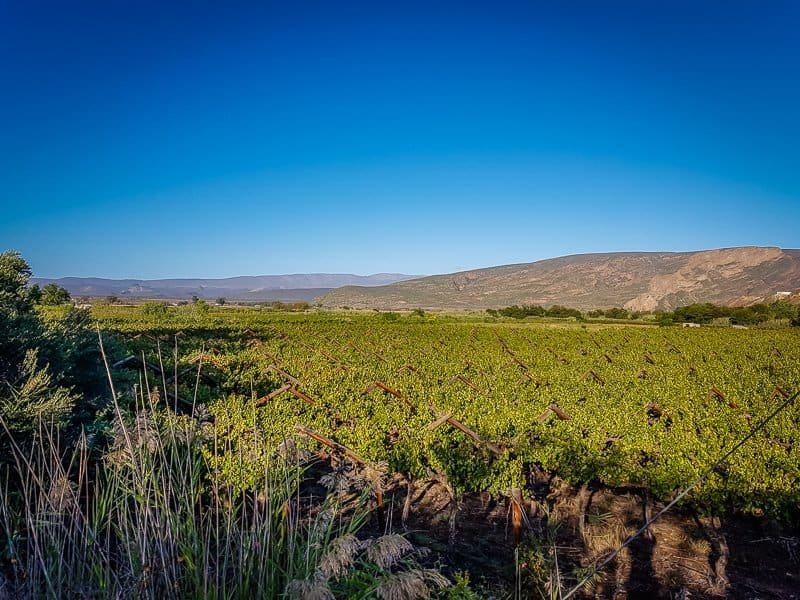
Actually he wanted me to buy a few bottles “for a friend” so I got that out of the way before having a look around.
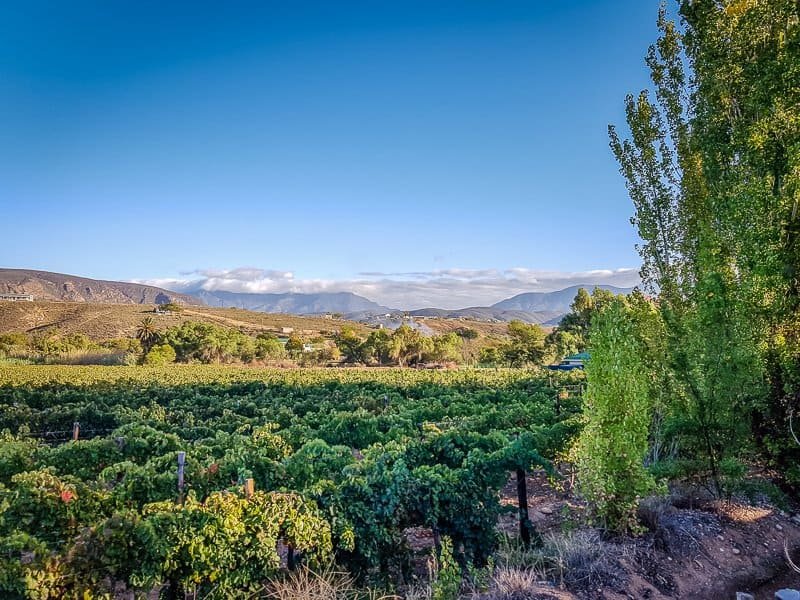
It’s a huge estate as you can see, and apparently the climate here is perfect for wine. And I can attest that the wine is perfect for me. They gave me good advice at the wine cellar and the red they suggested was fantastic. I shall have to try to find it in Norway – or go back to Calitzdorp. I think I prefer the latter…
Accommodation: The Queen of Calitzdorp
There are quite a few places to stay here, most of which are guest houses but I decided to try a hotel, the rather splendidly-named Queen of Calitzdorp. While none of the streets in Calitzdorp are exactly noisy, the Queen is situated on a particularly quite side street a few blocks from the main road.

It was great to get to my room and relax after a long and hot day in the driving seat. It was lovely and cool and for once I made use of the air conditioning.
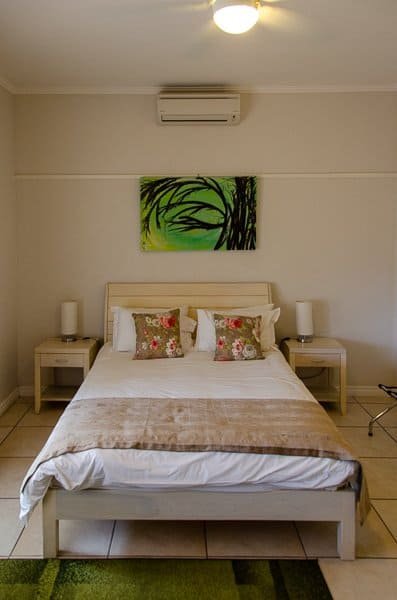
Another comfy bed which helped me get a solid night’s sleep.
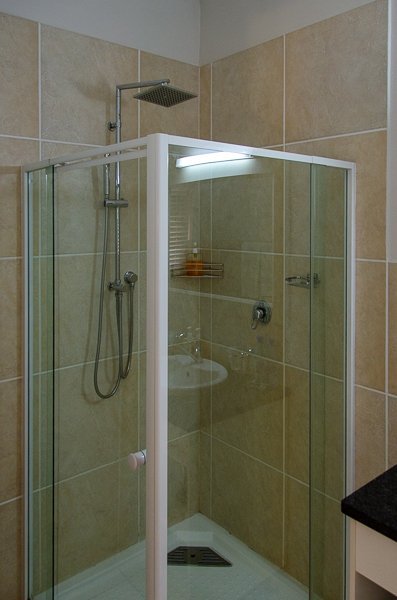
A good shower, strong water pressure and no leaks from the cabinet.
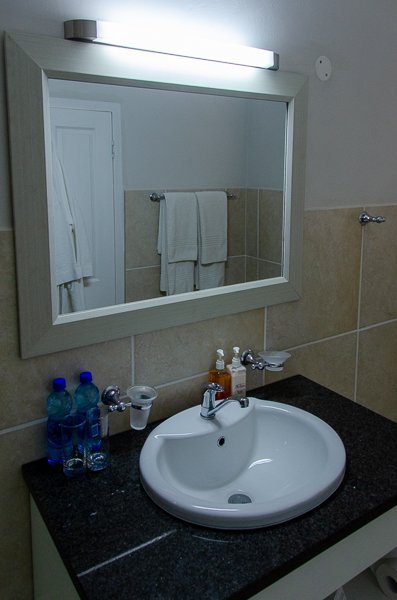
All toiletries and amenities are provided.
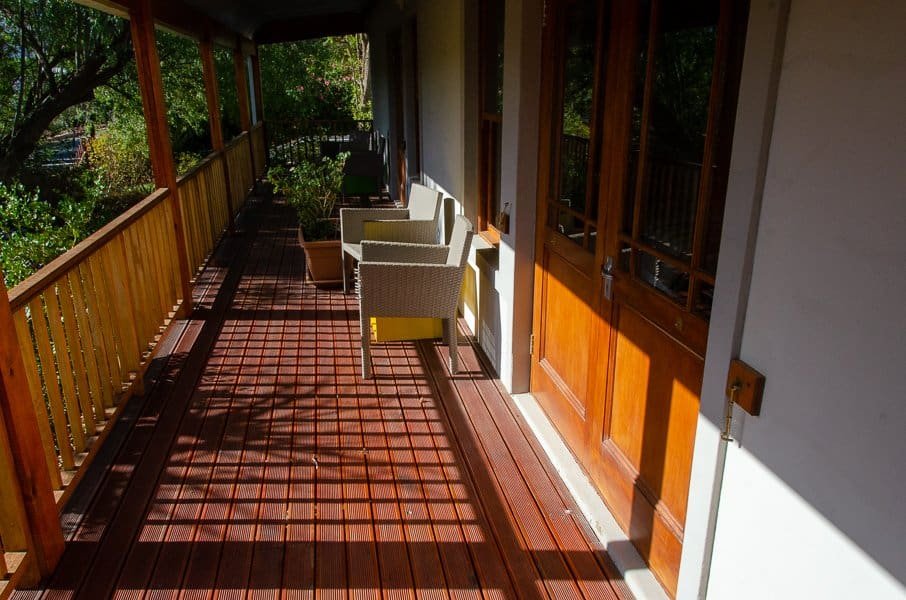
Once of the best things about the rooms in this part of the hotel is the veranda reached from the “back door”.
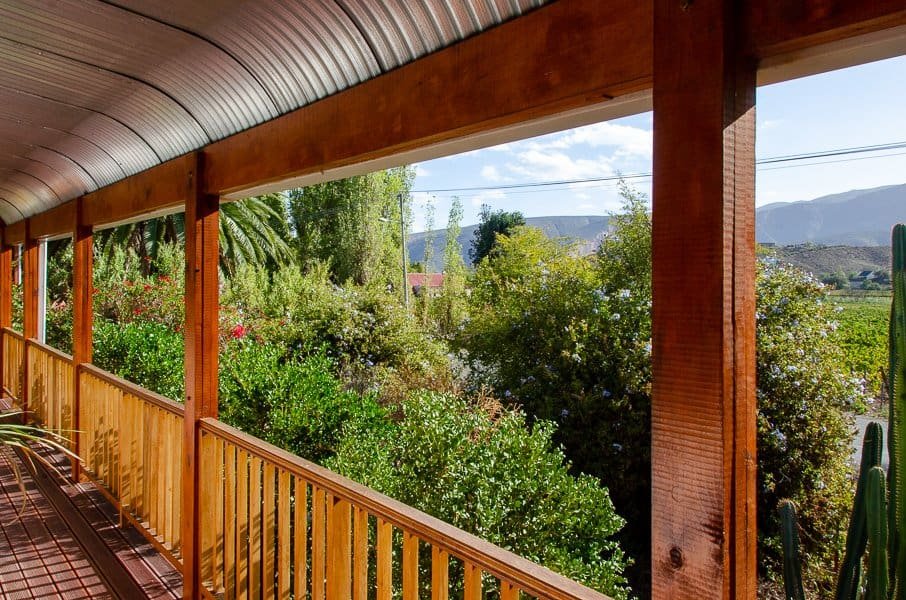
A very nice place to sit and enjoy the view.
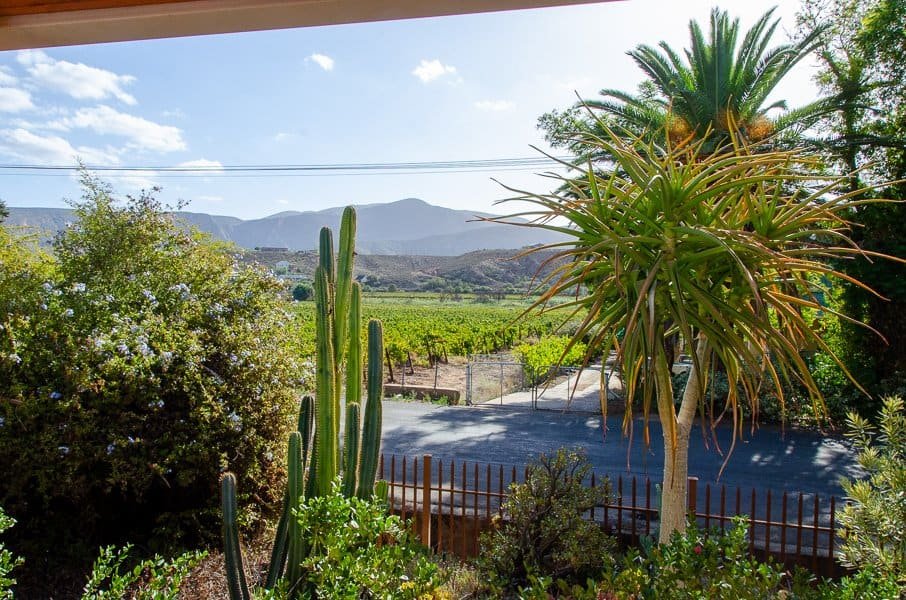
Miles and miles of vineyards as far as the eye can see.
In the evening I went out for dinner at a restaurant just down the road and has a stroll around town. The Queen of Calitzdorp is an excellent property and represents fantastic value for money too – a hotel of this quality in one of the big cities would be able to charge a lot more. Highly recommended.
Back on the road
The next morning I enjoyed a wonderful breakfast at the hotel before saying my goodbyes and packing my bags into the car.
I was looking forward to this day at the wheel even more so than usual as it promised some exciting and dramatic stretches of road.
Instead of returning to the R62 straight to Oudtshoorn, I chose to divert onto what the Rough Guide accurately describes as “one of the best drives you’ll ever do in South Africa” – through the Groenfontein Valley.
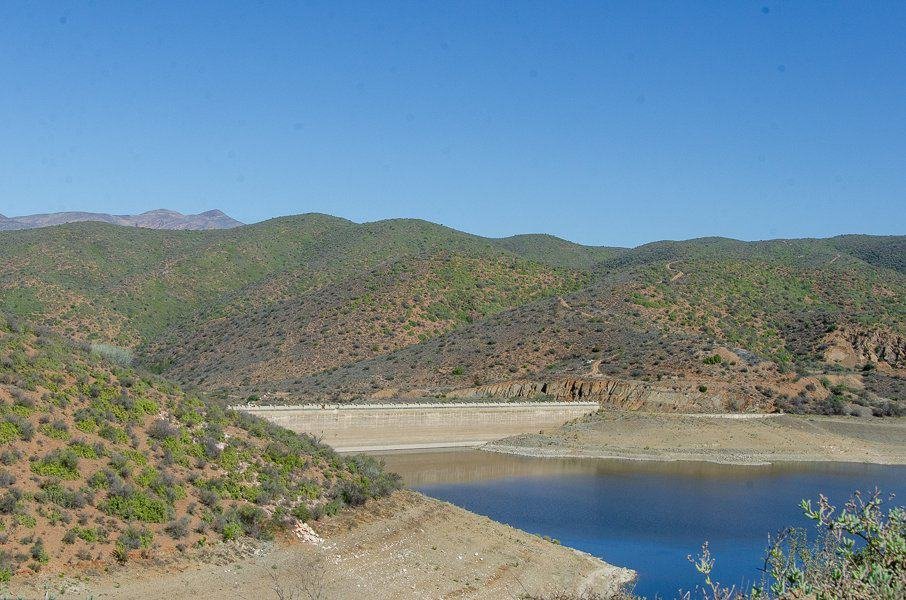
The tarmac gives way to dirt road not long out of Calitzdorp, but there is nothing that a regular sedan can’t handle.
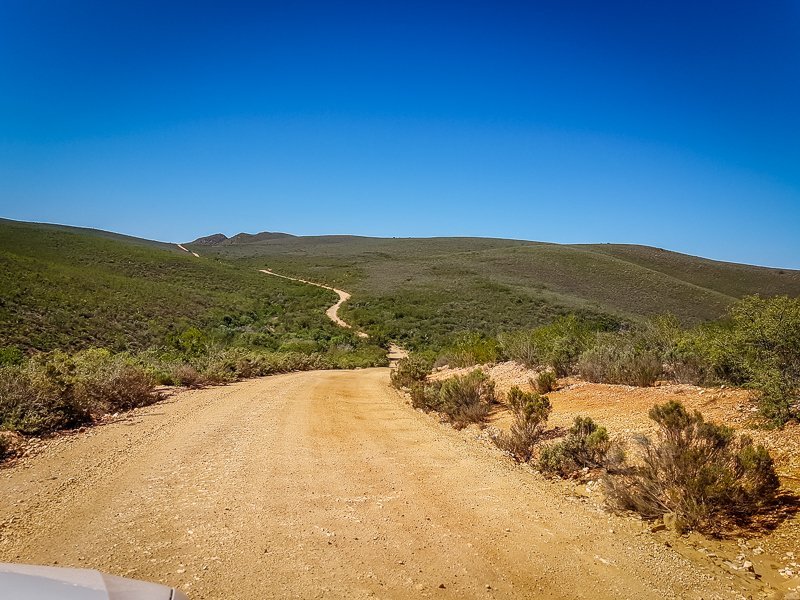
The twisting, narrow road passes through the foothills of the Swartberg mountains, crossing streams and passing Karoo farms, homes and a properly off-the-grid retreat.
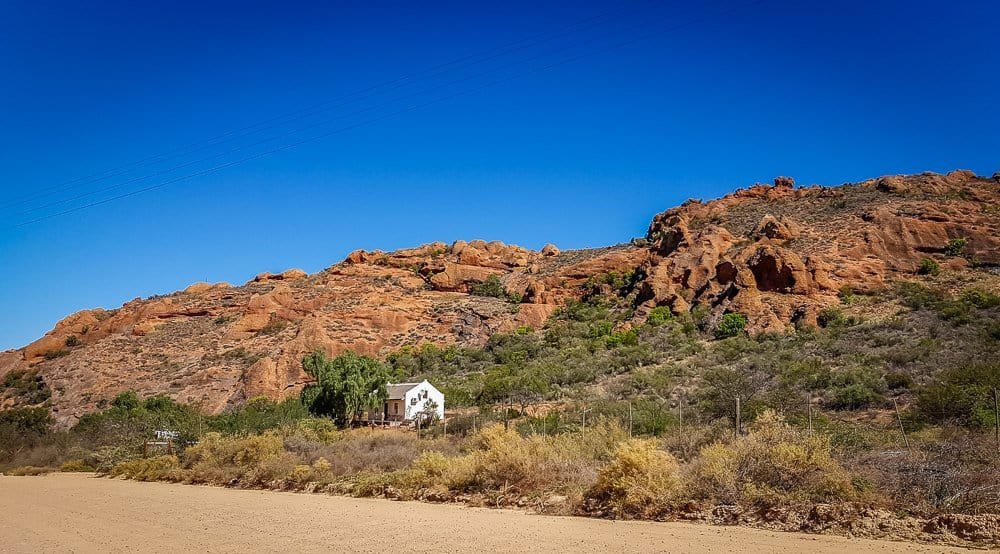
The whitewashed cottages are typical of the area.
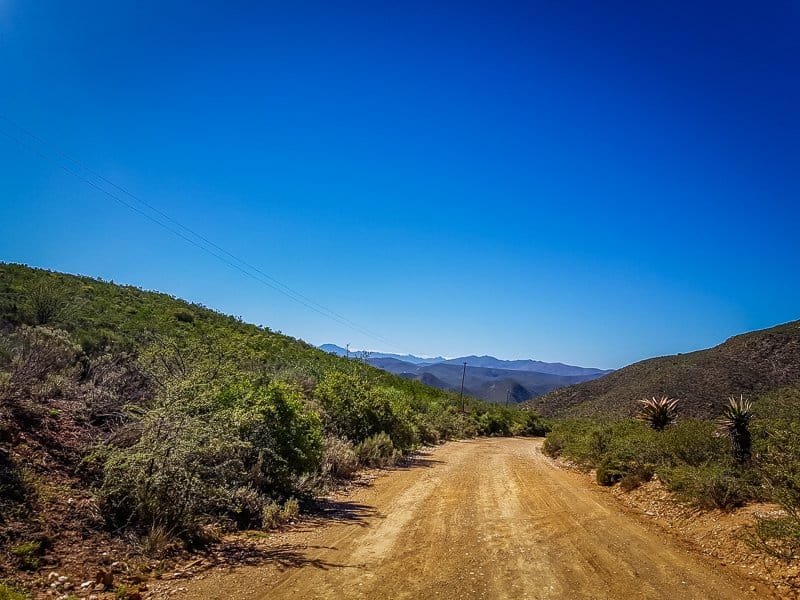
Allow enough time to enjoy the views and stop for photos – it’s a magical journey. I didn’t see a single person or vehicle on my trip, but I did see this fella…

After rejoining the tarred R62 again I stopped in Oudtshoorn, known as the ostrich capital of the world. I was only in town for diesel, and without a burning interest in Africa’s biggest bird I carried on northwards. That was my last time on the R62, which continues almost all the way to Jeffreys Bay in the Eastern Cape.
But another highlight of this road trip is found less than an hour north of Oudtshoorn.
Driving the Swartberg Pass
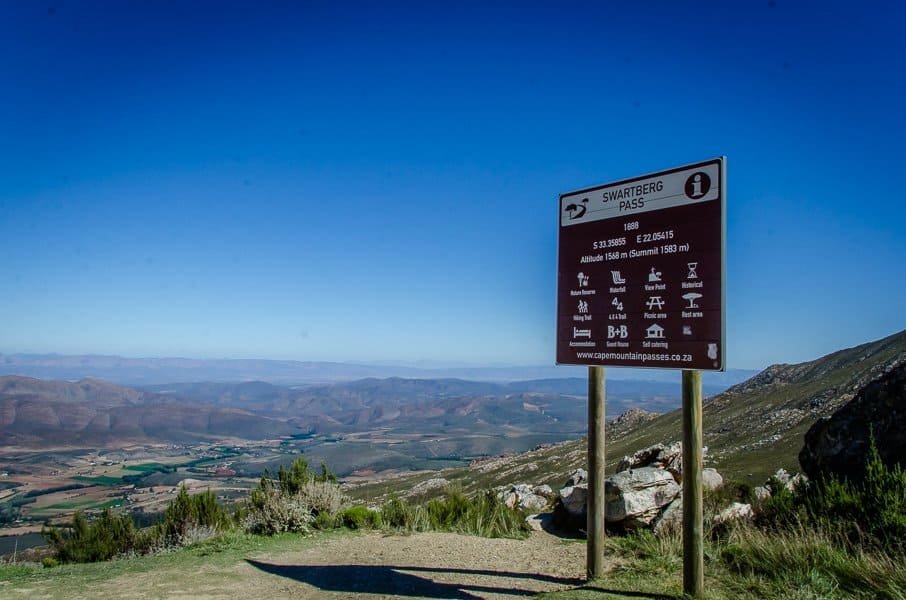
The Swartberg Pass is considered one of the finest mountain passes in the world: an untarred road that winds to the summit 1,585 metres above sea level in steep zig-zags and sudden switchbacks with breathtaking views at every turn.
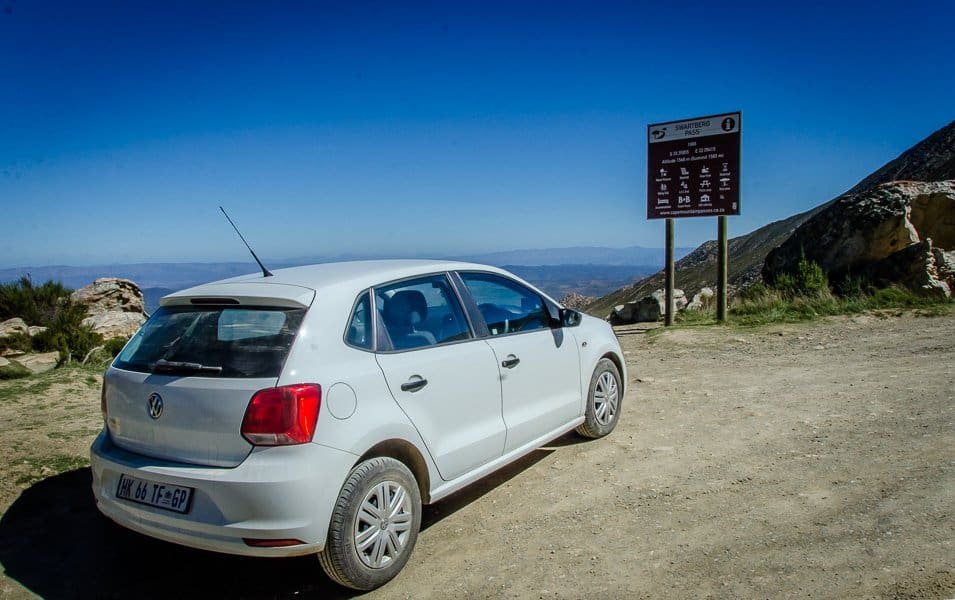
The Pass is a 27 km-long gravel road with steep inclines. It lies on the R328 and is the shortest route between Prince Albert and Oudtshoorn.
In good weather, such as when I visited, the road can be tackled with any vehicle. Vehicles with low clearance must go very slowly across some eroded sections but will be able to complete the route.
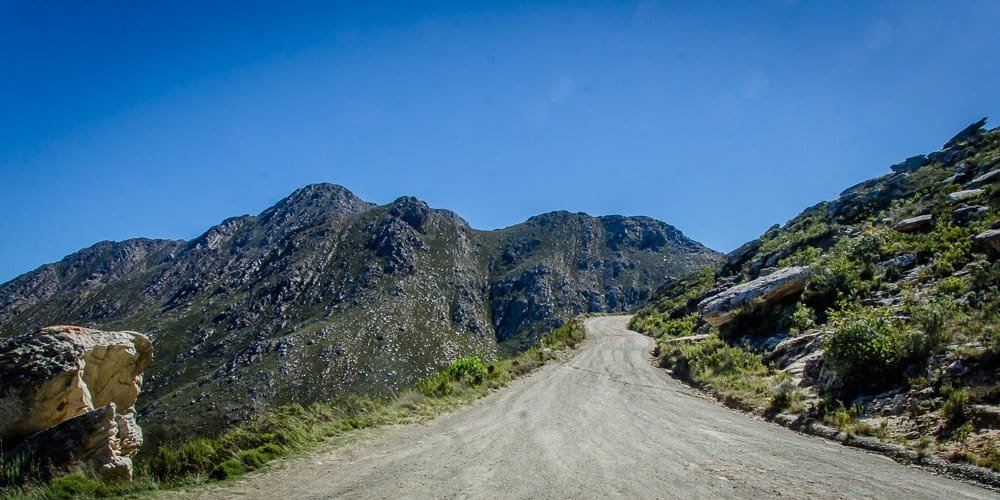
Along the way there are relics of an old prison, toll hut and other interesting historical sites. Often covered with snow in winter, the mountain’s unique micro-climate supports fynbos and a rich bird life in contrast with the arid zone flora and fauna outside its cool shady valleys.
Birdlife is magnificent with Verreaux’s eagles and jackal buzzards a regular sight.

The Pass was constructed between 1881 and 1886 as part of a drive by the government of the day to open reliable routes between the interior and the coast.
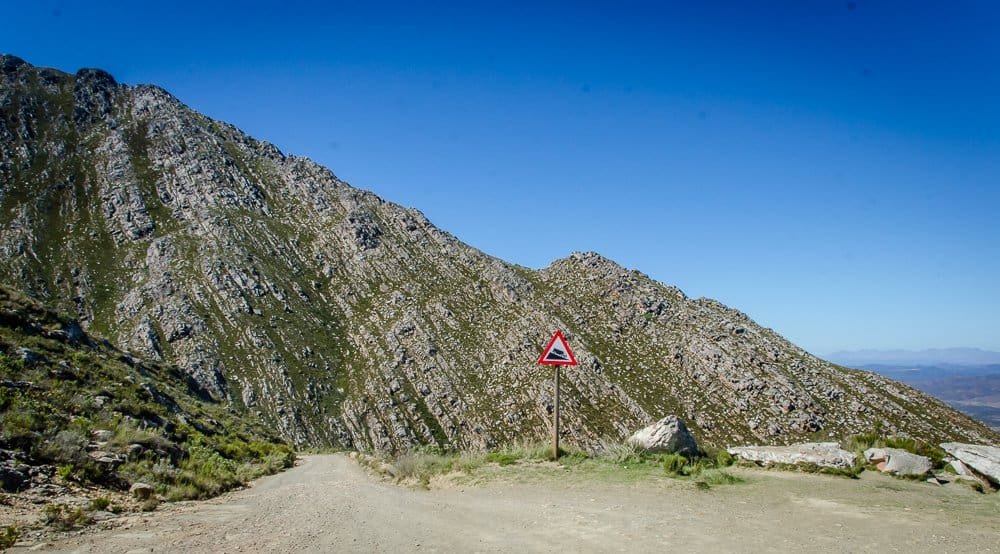
The design of the route was done in 1879 by Thomas Bain and constructed between 1881 and 1886 to open a reliable route between the interior and the coast.

The road is supported in places by hand-packed, drystone retaining walls, a trademark of the brilliant Thomas Bain. Using mainly convict labour, Thomas Bain completed the road in record time and by November 1886 it was opened to traffic.
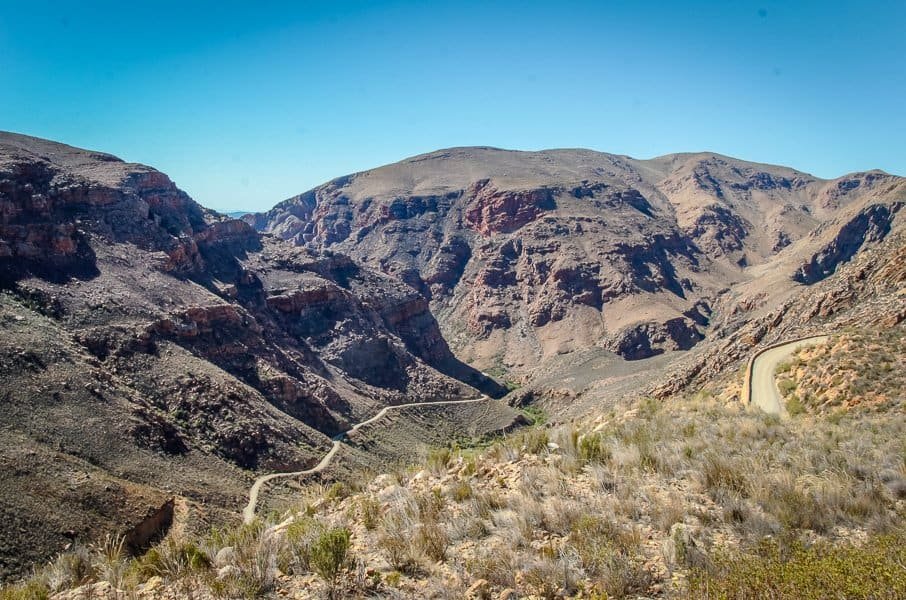
The official opening of the Pass took place with much pomp and ceremony on 10 January 1888.

It takes about 1 hour to drive the entire length of the Pass but allow plenty of time for photos and simply taking in the scenery at viewpoints.
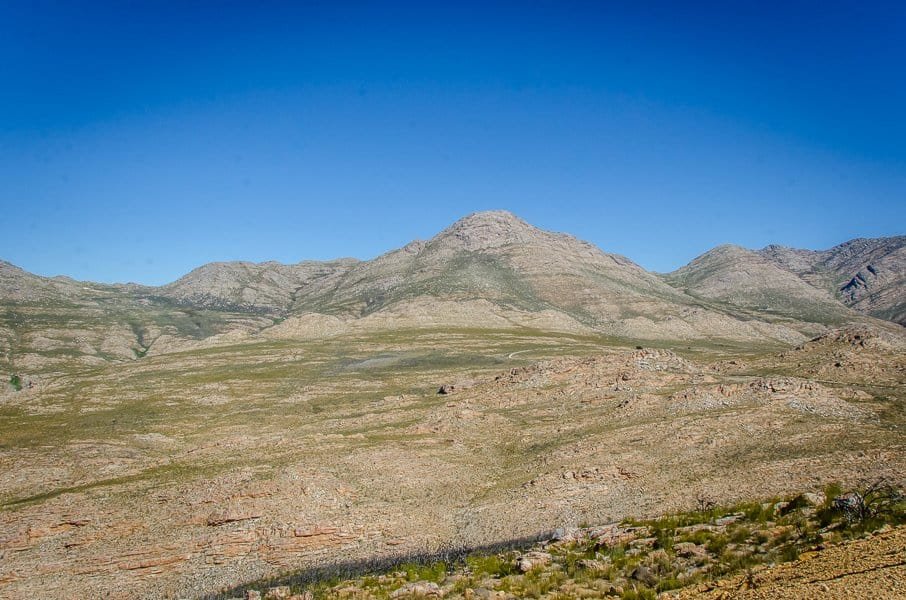
The Swartberg Pass was declared a Provincial Heritage Site in 1988, its 100th anniversary.
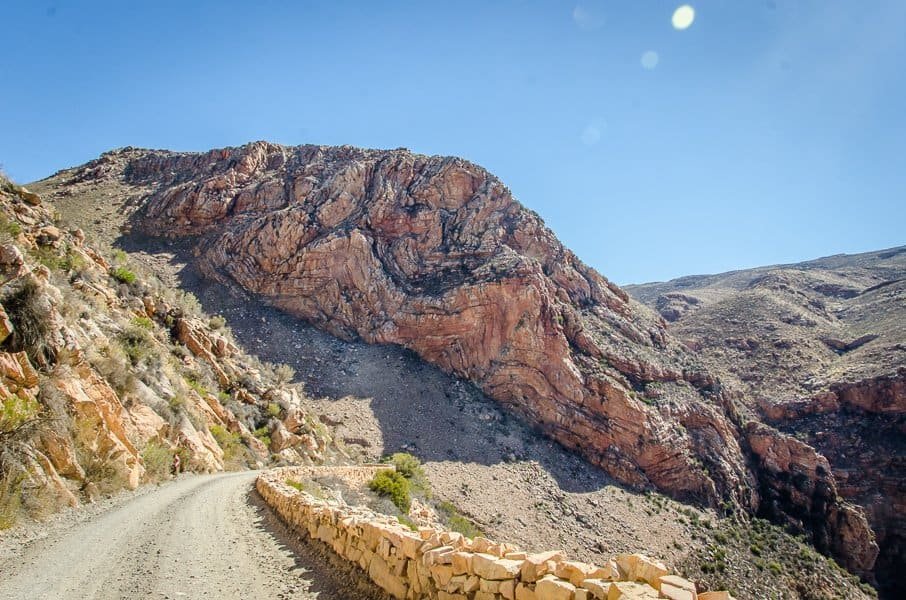
The drystone packed retaining walls are an engineering feat. On the southern side there is a stretch where the retaining wall is 2.4 kms long without break. At Boegoe Kloof, also on the Southern side of the Pass, the retaining wall is just over 13 metres high.
Laws of friction and cohesion govern the pressure on retaining walls and is the mechanism through which the stones are kept in place – no cement or mortar was used in the construction of the initial walls.
You can explore more about the history and stories of the Swartberg Pass at the Fransie Pienaar Museum where there is an entire exhibition on the construction of the Pass.
The drive was an amazing experience and something I had been meaning to do for several years. It didn’t disappoint, and the Swartberg Pass should be on every Western Cape itinerary.
From the end of the pass I had just 10 minutes more on the (eventually asphalt) road to my next overnight destination, and the last one in the Karoo for this time.
Prince Albert

Image (c) Daily Maverick https://www.dailymaverick.co.za/article/2014-09-11-prince-albert-arts-festival-an-ancient-space-in-the-heart-of-the-karoo-regenerated/
Situated at the foot of the Swartberg Mountain range amidst spectacular scenery, Prince Albert enjoys a perennial water supply in this arid region – though regular drought conditions mean that water conservation is a way of life.
The climate is superb with an extremely high number of sunny days each year, spectacular night skies and pure clean air.
Built in the 18th century, the town is a well preserved gem, with beautifully preserved Cape Dutch, Karoo and Victorian buildings. Seventeen are listed as local provincial heritage sites.
Prince Albert is the perfect base for exploring the Swartberg region (much of which is part of a UNESCO World Heritage Site). The Garden Route resorts and beaches are just two hours south by road.
The town also offers many outdoor activities such as hiking, mountain biking, fossil-walks, birding and botanical trails. It is well known for its sun-ripened fresh and dried fruit, especially figs and apricots, and Karoo lamb, olives, olive oil and handmade cheeses are all local specialities.
It’s yet another appealing place in the region to spend a night or two and unwind.
Accommodation: Karoo Lodge
For such a small town there is plenty of accommodation including hotels, self-catering units and guesthouses. I chose to stay in the cosy, family-run Karoo Lodge, situated just off the main road.
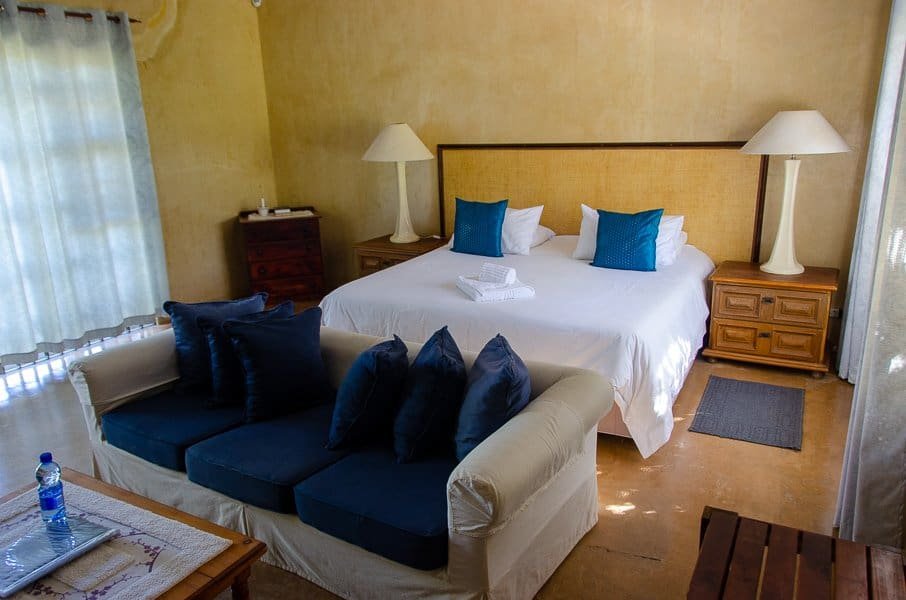
I had a very large and quiet room at the back of the property, with a typically huge and comfortable bed.
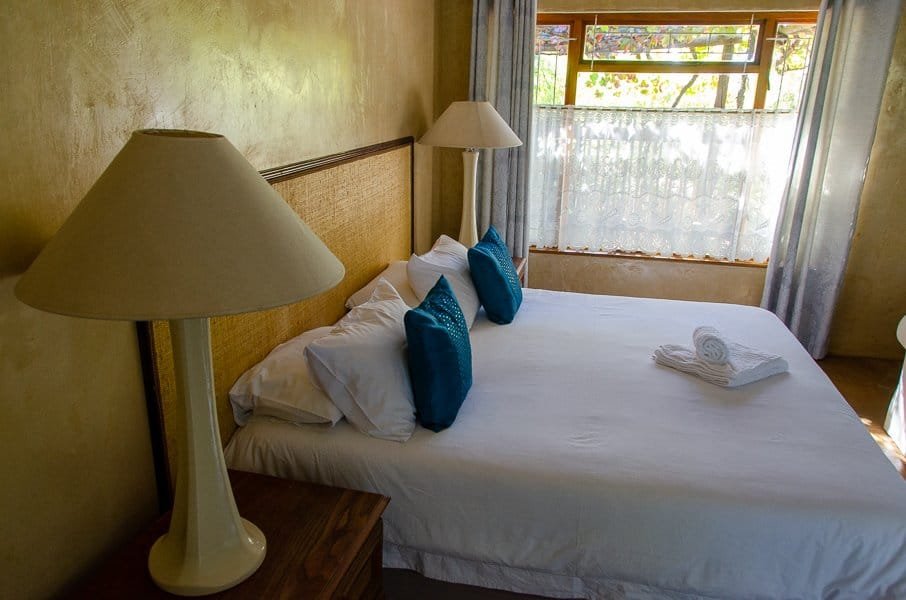
I almost had to decide which way round to sleep…
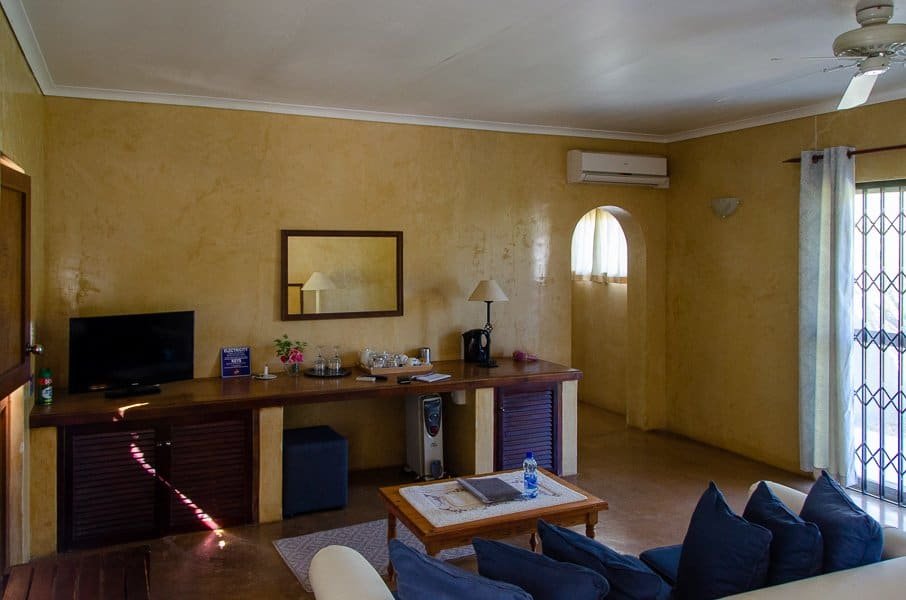
As well as a TV there was everything else you might need, including tea and coffee making equipment.
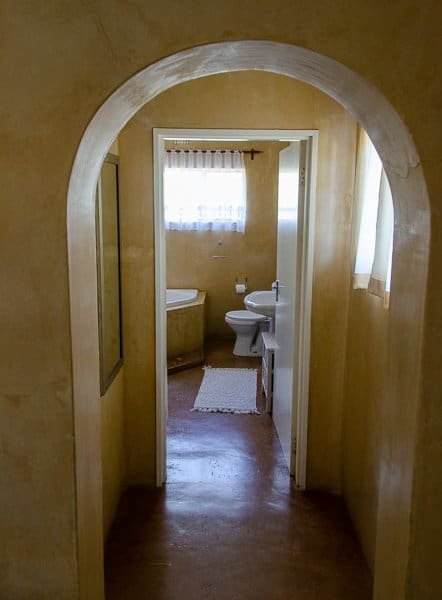
There was a large storage area on the left of the corridor to the bathroom, which was also a decent size and included a large corner bath.
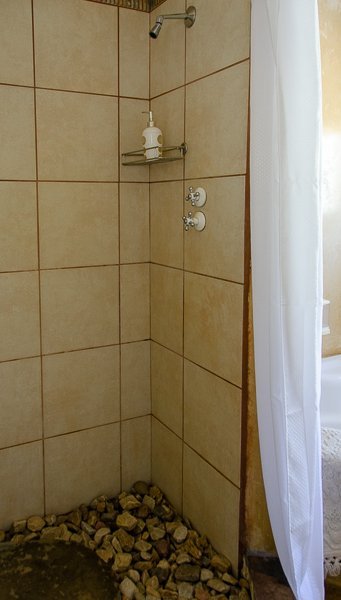
A good shower too, with the stones under the mat giving that “outdoor” feeling.
I basically took it easy in Prince Albert – it was a Sunday so quiet anyway – although I did have a walk down the main street and a G&T at a hotel bar. And in the morning I went for a run and pretty much covered the entire town in under an hour. It’s a small place – and a very nice one.
After my run and a shower, I enjoyed a wonderful home-cooked hot breakfast before getting in the car for the longest drive of the trip. It was time to leave the Karoo…
From the Karoo to the Cederberg Mountains
There was another area of the Western Cape I wanted to explore on this trip – the Cederberg Mountains. I had read a little about the place and it sounded like the perfect addition to an off-the-beaten-path itinerary.
Since I had limited time, it did mean a long journey from Prince Albert but such is life. And it was well worth it…
I headed north in the rising heat and within half an hour reached the N1, the national route that runs from Cape Town through Johannesburg and to Beitbridge on the border with Zimbabwe. It forms the first section of the planned but never realised Cape to Cairo Road.
This part of it isn’t terribly interesting or that scenic, however, making its way through an almost completely flat and arid landscape.
Matjiesfontein
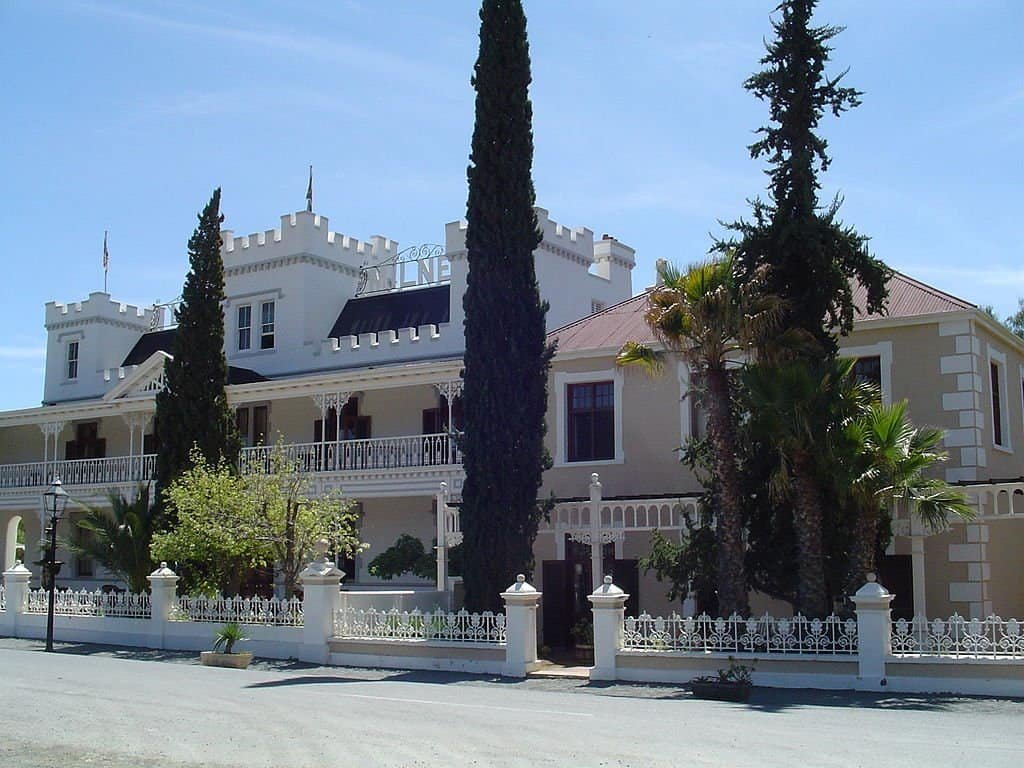
Image (c) Ann Williams / CC BY-SA (https://creativecommons.org/licenses/by-sa/3.0)
The historic village of Matjiesfontein makes an interesting break on the journey if you have the time. A Scotsman by the name of James Douglas Logan, who was superintendent of this stretch of railway, bought land at Matjiesfontein because he believed the clean Karoo to be beneficial for his weak chest, and opened a refreshment station for the passing trains. This was so successful that the business soon formed the nucleus of a growing village.
All of the buildings bear testament to their Victorian past, giving the tiny settlement a slightly unreal feel. The unexpectedly grand station and the Lord Milner Hotel are famous highlights – the latter (pictured above) complete with turrets, frills and balconies with fountains at its entrance.
Back on the N1, the views become more interesting as the terrain becomes more mountainous. I turned off the highway at after Touws River and took the R46 for the hour-long drive to Ceres, the main town in this renowned fruit-growing valley. I filled up on both diesel and food, then turned north on the R303 with the Cederberg Mountains on my right.
The Cederberg Mountains
This area is wild and warm and has a raw, dramatic beauty. Be prepared for towering mountains, stunning purple and orange sunsets with the scent of orange blossom in the spring. You can walk or hike without another person in sight, enjoy bouldering and climbing at Rocklands, discover the beautiful bird life, swim in the clear mountain rock pools or marvel at San rock art.
Or – as was my plan – simply relax and enjoy the exhilarating peace of this unspoilt paradise.
The Cederberg has an exceptional botanical diversity, being part of the Cape Floral Kingdom of South Africa, and among the twisted rock formations, farmers cultivate the world-famous healthy rooibos tea, found only in the Cederberg of South Africa.
My accommodation was just over 40 km from the main road on a good gravel road.
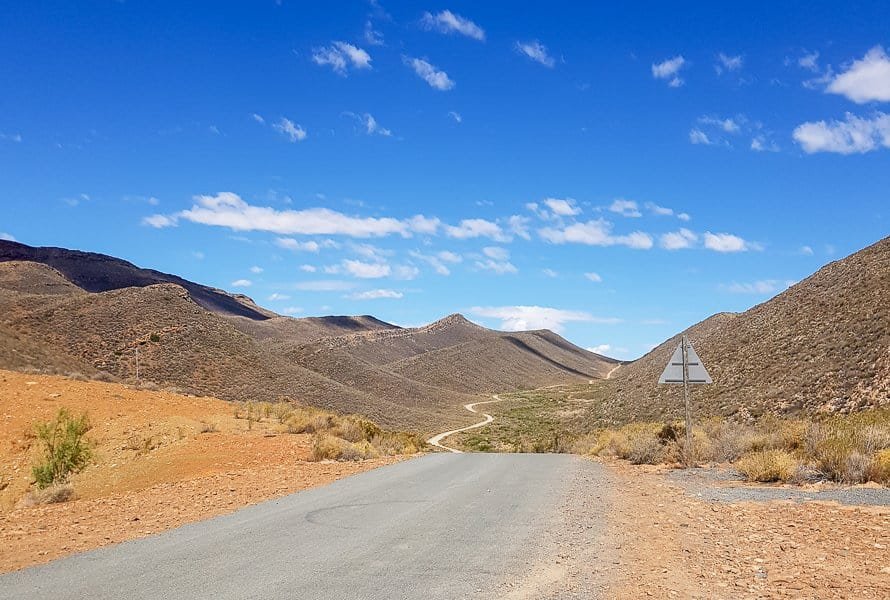
There are plenty of wild animals in the area, too – baboons, small antelope and even leopard and aardwolf if you are very lucky.
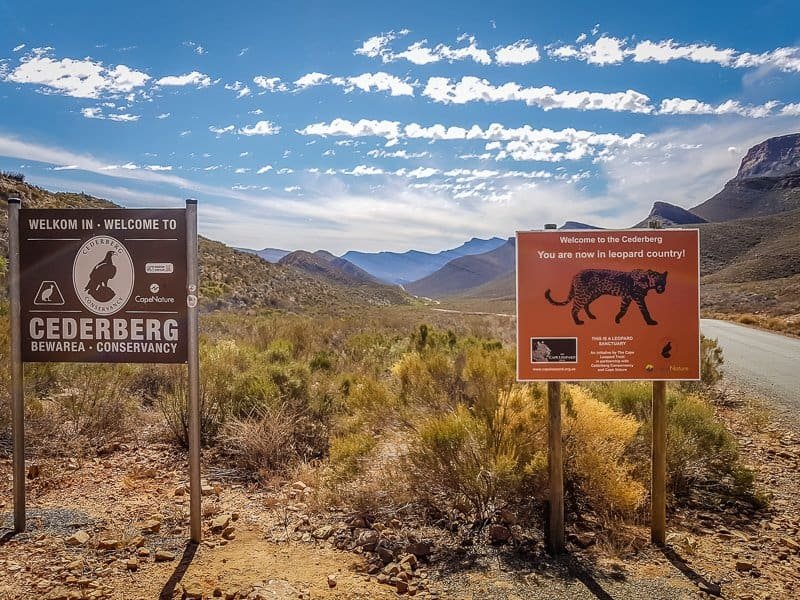
Accommodation: Mount Ceder
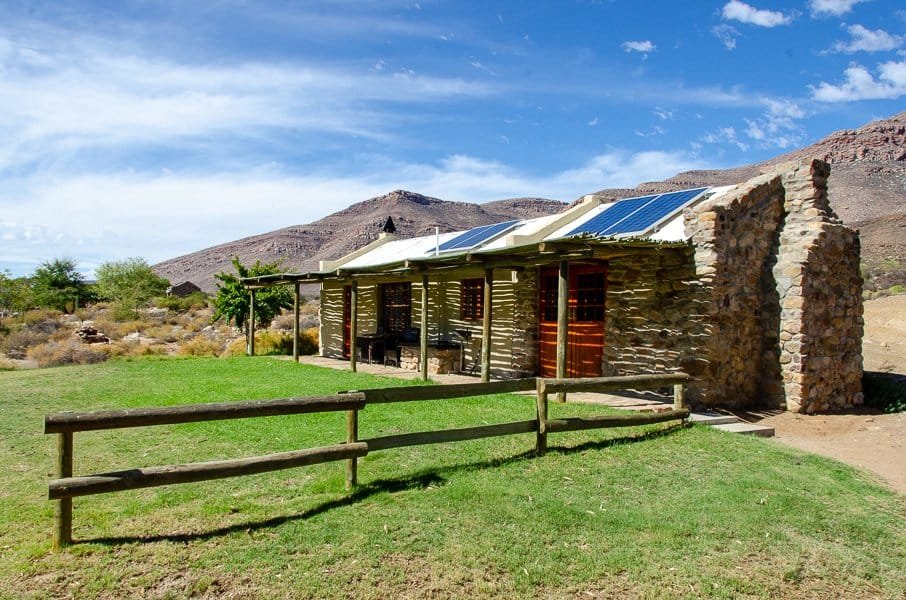
Mount Ceder accommodates both campers and those looking for a roof over their head. I had booked one of their self-catering houses (finally an apt description – “room” would definitely give the wrong impression).
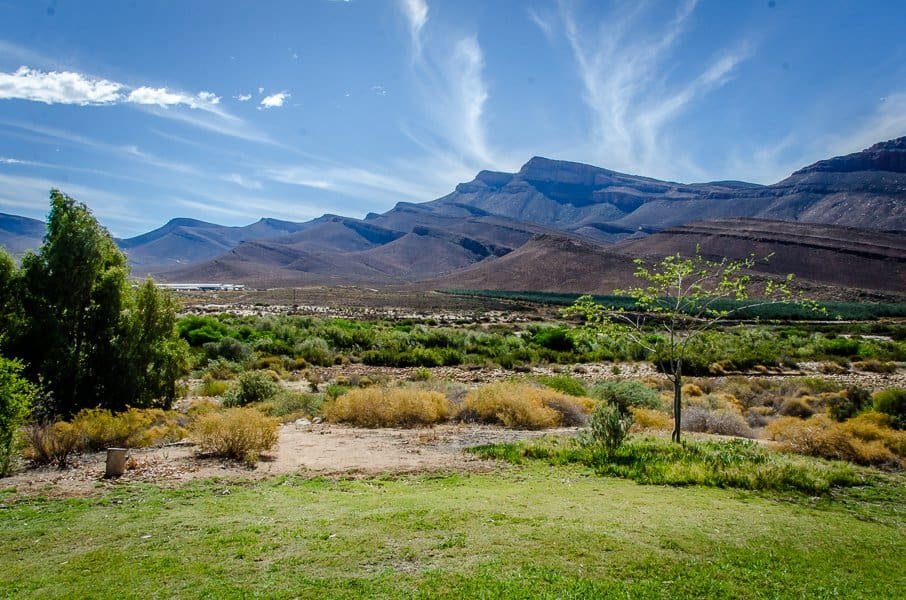
Mine was at the end of a dirt road from the main building and had a stunning view from the veranda.
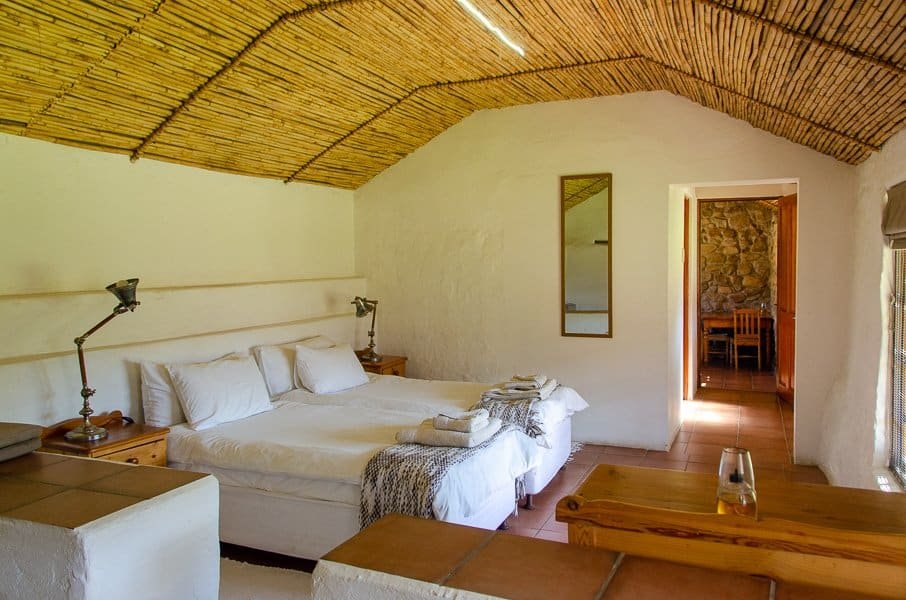
The interior was every bit as charming as the exterior. I had two comfy beds and a lot of space.
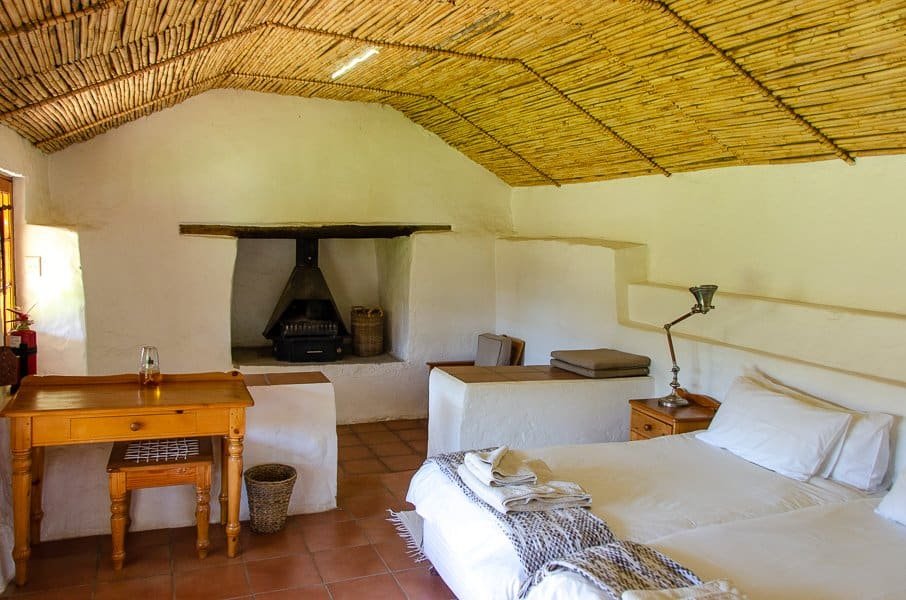
It must be so cosy to be here in the winter with a roaring fire…
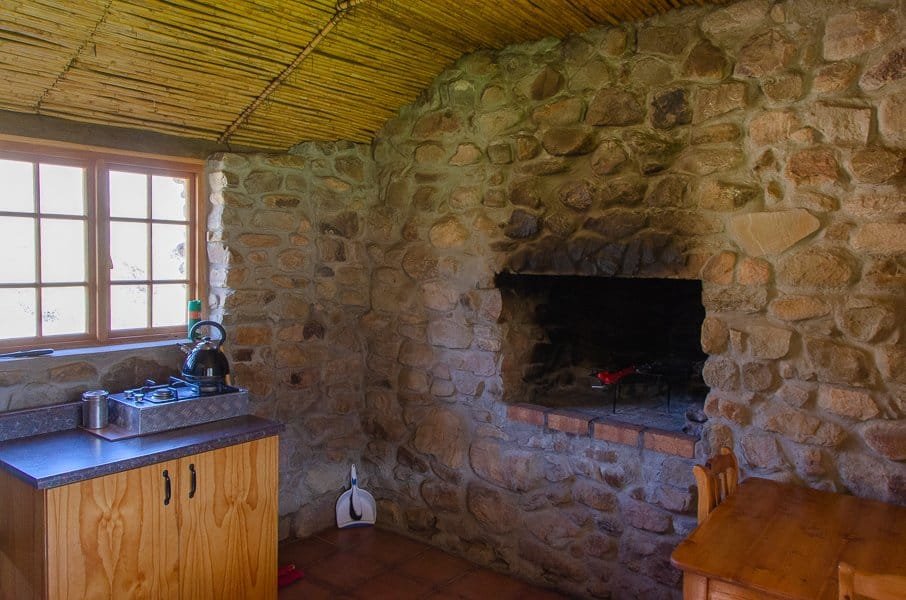
There was also a hearth in the kitchen as well as all the cooking equipment you could need.
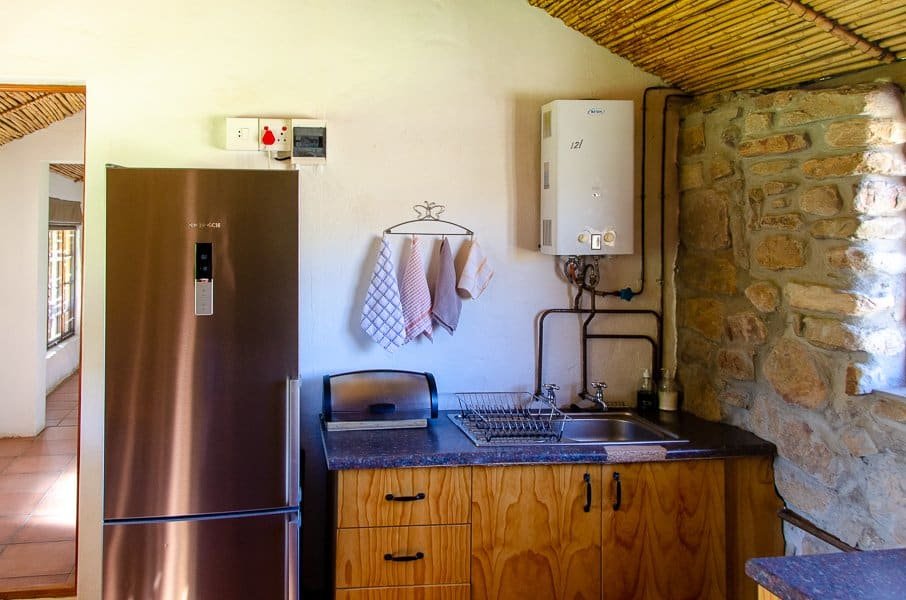
It would be easy to stay here for a few days.
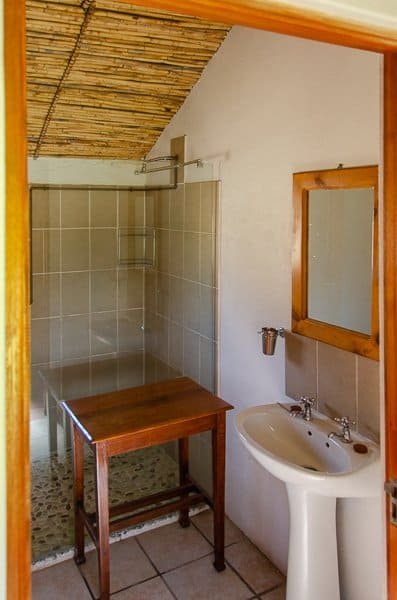
The bathroom was small but well-designed, with a shower big enough for two.
I had not brought supplies so I ate in the restaurant in the evening. I should point out that you do need to book meals in advance as they need to plan their purchases and are some way from the local cash and carry. I hadn’t but was lucky as they had enough to make me a great meal.
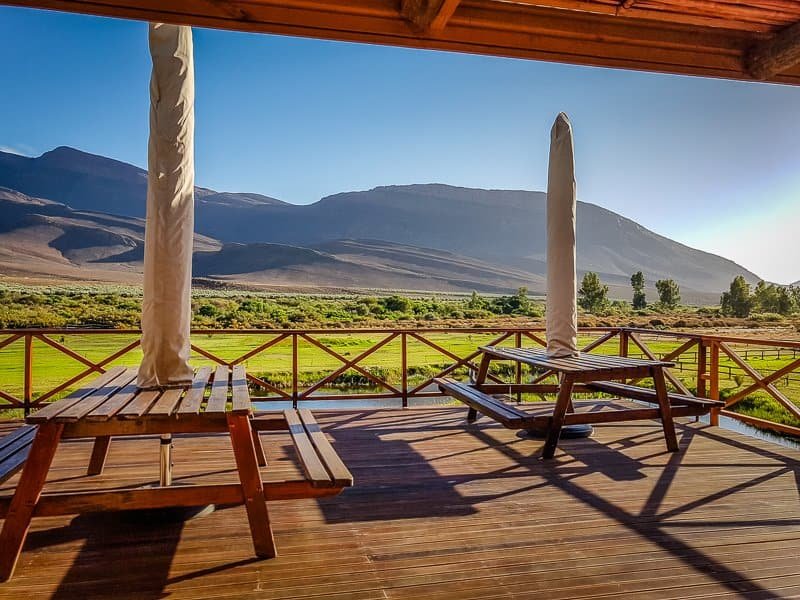
And the view from the restaurant for breakfast the next morning was unimprovable…
I’m sure you can tell that I loved this place – and yet again was kicking myself for not staying longer. Having said, that my time was limited on this occasion and I wanted to see as many places as possible. But I will be back…
I started early after an excellent night’s sleep and drove back to the main road, enjoying the views in the opposite direction.
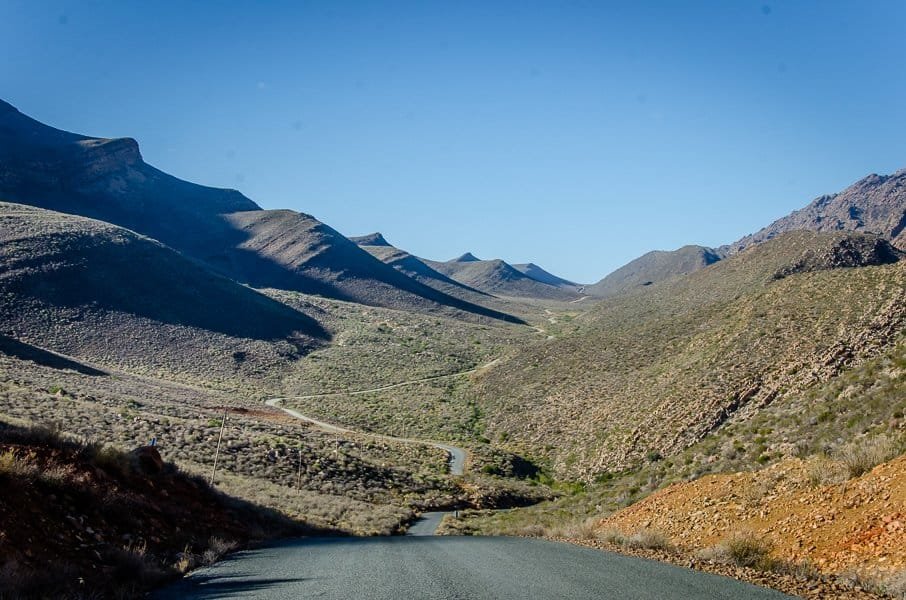
My plan now was to make my way to the west of the Western Cape, with my last night on this road trip near the coast. But I had a couple of detours planned…
Middelburg Pass
Instead of driving 100km back the same way south to Ceres, I returned to the R303 that connects that town with Citrusdal to the north.
Now on the map, and on the Satnav, this looks like a regular tarmac road with a nice mountain pass as it nears Citrusdal. The reality is somewhat different and a lot more fun – if unexpected.
The road enters a narrow, green valley passing farms and villages and then a sign came up on the left showing that the asphalt was about to give way to dirt and/or gravel. I also saw one with “Heavy vehicles proceed at own risk beyond this point”. But my little Volkswagen didn’t fall into this category so I figured I had no worries there.
In the event, it was quite a challenging drive but an exciting one – with several full hairpin bends and places where the road was not much wider than my car, my heart was beating a little faster than usual and I did wonder if I was going to make it a couple of times when my wheels skidded on the dirt surface. Mind you, turning around was not an option as there was no place to do so.
After many twists and turns I breathed a sigh of relief when the tarmac reappeared. This was short lived, however, as the road is only asphalted for the most extreme gradients and I was soon back on dirt. Finally I reached the summit with its fabulous views but only a tiny parking area. I decided not to get out and take pictures but rather continue and enjoy the scenery from behind the wheel.
You can see what the pass is like on this video:
Descending the pass on the other side was even more demanding but equally worthwhile. I can’t deny that I was glad when the road became surfaced again for the rest of the way to Citrusdal though.
After a break in town to get my breath back, I headed south once more, this time on the fast, straight, flat and far less fun N7 highway.
I had about 80km of this then turned onto the R311 in the heart of Swartland wine country.
Allesverloren
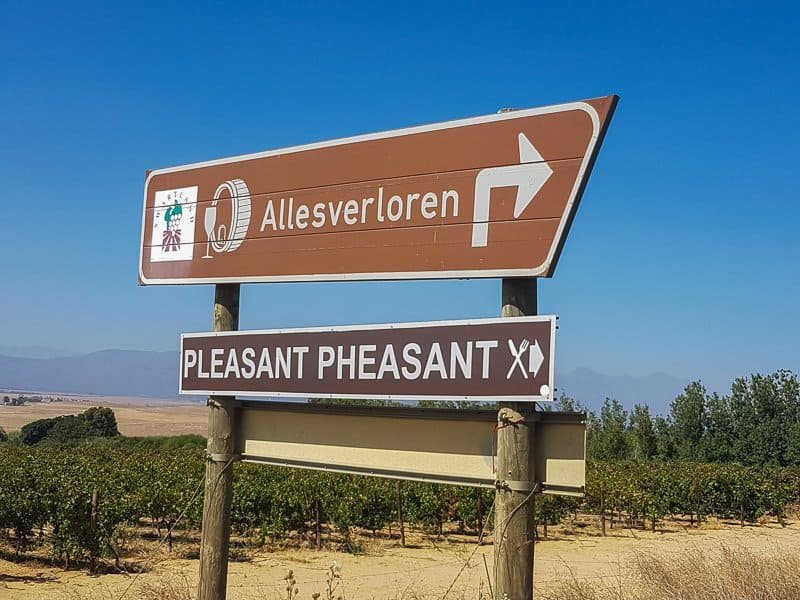
I had a purely selfish reason to visit the Allesverloren vineyard – I had discovered their wines in the duty free shop many travels ago and they became family favourites. Since I was in the area, I had to pop in.
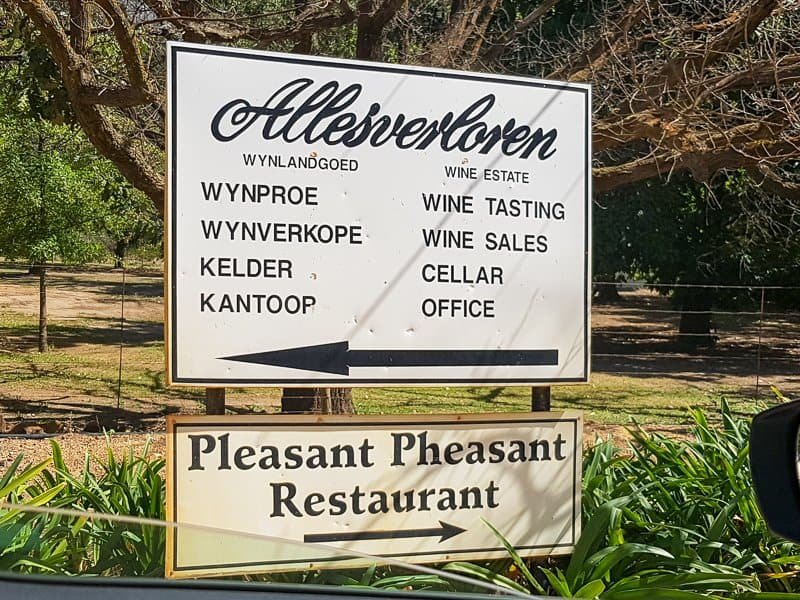
If you were wondering about the name, let the owners explain:
The history of our Swartland Winery dates back to somewhere between 1696 and 1704, when the governor of the Cape left it to a widow named Cloete. This courageous woman was one of the first settlers who ventured into the inhospitable Swartland region. The early settlers were simple people, with only the most limited agricultural equipment and basic necessities to support themselves.
In order to purchase tools or attend church, they had to undertake a long and arduous wagon journey along primitive roads to Stellenbosch. It was on their return from one such journey in 1704 that the settlers found their house burnt to the ground and the farm destroyed. Hence the estate’s sad name, “Allesverloren”, which means “all is lost”. Considering its name, it is ironic that this gem of the Swartland wine region has had such a happy fate.
By 1806, Allesverloren’s owners had already harvested the estate’s first wine grapes and since the estate passed into the hands of the Malan family 140 years ago, Allesverloren has gone from strength to strength. Our estate has increased to 227 hectares and our wines continue to earn international acclaim.

I picked up this beauty that is hard to find in Norway and surprised myself by taking it home unopened…
I had lunch in the local town of Riebeek-Kasteel and then continued to my final overnight destination.
Darling

Image (c) Hello Darling https://www.hellodarling.org.za/
The tourist office in Darling market the town thus: Peace and quiet is foremost. A calm and peaceful retreat from the stresses and strains of the hectic city life. A chance to escape the daily grind and re-energize the soul.
Darling certainly delivers the above, and being only an hour’s drive from Cape Town it is a popular excursion from the regional capital.
There are also a number of other attractions, however. There’s craft beer and a taproom at Darling Brew, olives and olive products to be tasted at Darling Olives and Het Bos (by appointment). The top end of the Main Road boasts an artisanal cheesery and deli plus The Darling Wine Shop. Wine tasting at Ormonde, Cloof, Darling Cellars and Groote Post along with its long established, family friendly Hilda’s Kitchen. A San centre at nearby !!Khwa ttu and the beach at Yzerfontein is just a short drive away.
Back in Darling itself you can visit the Darling Museum and eat at a number of restaurants and coffee shops like Bistro Seven, Marmalade Cat, Café Mosaic, Chicory Cheese Café and Brig’s Barn.
There’s lots of accommodation to suit all tastes and budgets and, best of all, even a toffee and caramel tasting at Darling Sweet.
I had decided to add Darling before reading the above, which would certainly have sealed the deal if I was in any doubt.
However, I arrived late in the afternoon and too late for the brewery. A major bungle right there. Still, I have sampled most of not all of Darling Brews, er, brews anyway and they get the thumbs up.
I wandered the town in the early evening, had a fantastic curry for dinner at Bistro Seven and had an early night. In the morning I saw the rest of the place during an early run and will definitely return to spend more time in Darling.
Accommodation: Darling Lodge Guest House
My bed for the night was in a room at this lovely guest house two blocks from Main Street.
It was quite a bed, too.
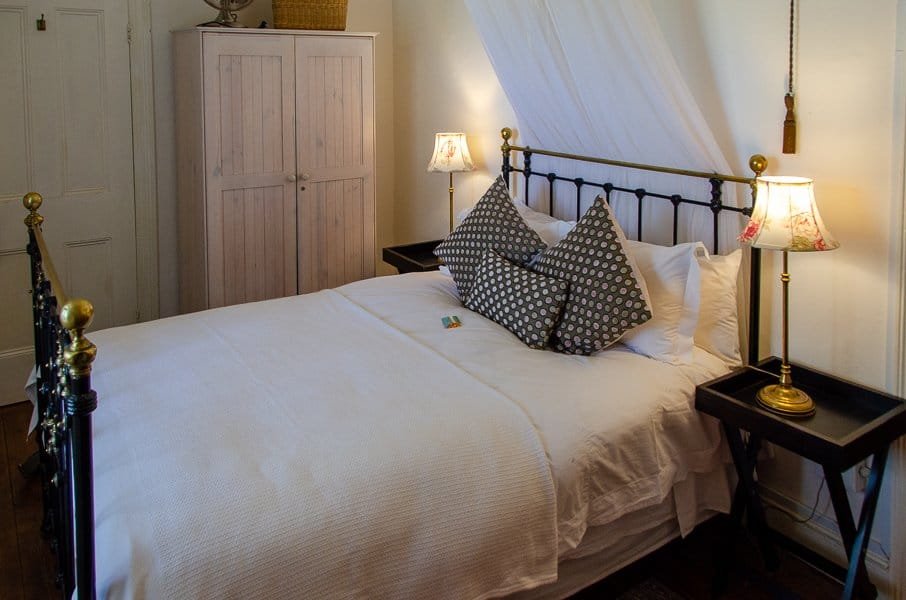
The design and decor throughout is very homely and warm,
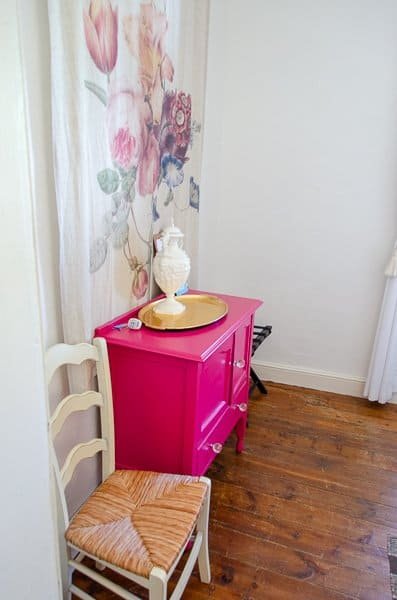
It’s colourful, too.
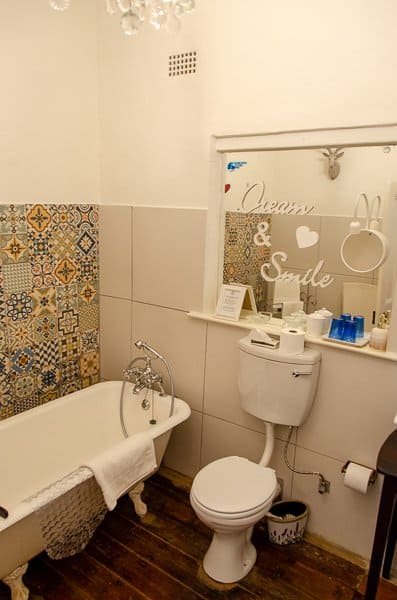
I liked the style of the bathroom but the lack of a shower curtain by the bath meant that a lot of water runs onto the floor if you shower. Not such a good idea with the wooden floor.
I enjoyed my brief stay – the location is excellent, the standard high and the breakfast superb.
Back to Cape Town
The next morning I headed back to Cape Town along the N27 coast road. As I left Darling a thick fog descended and I had no view of the sea until it cleared some distance to the south.
There’s not a great deal to draw visitors to this particular stretch of coast anyway, except perhaps those looking to fish. I didn’t stop on the way and was soon back in the big city.
What a trip that was – you really need to follow in my tracks.
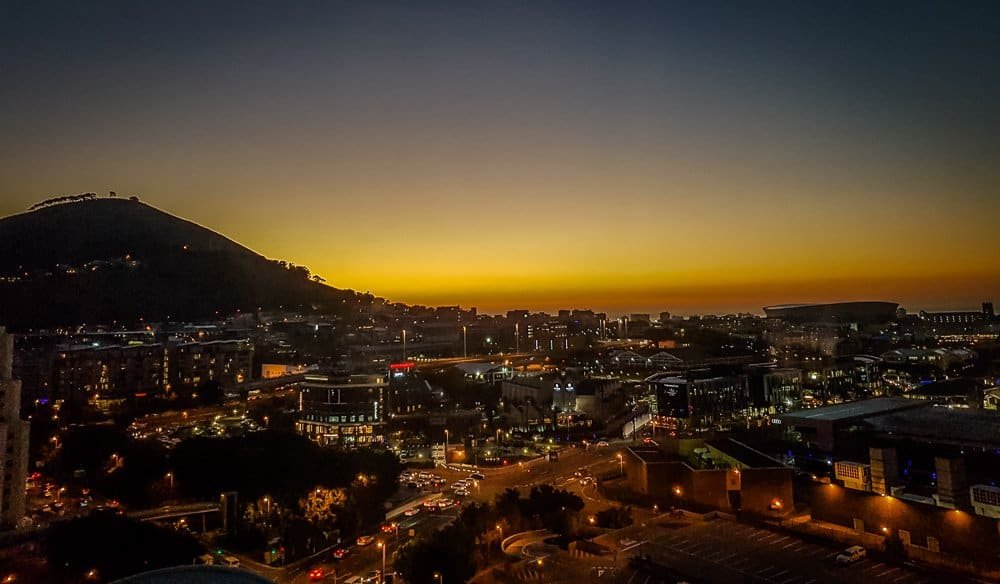
Does this report make you want to explore South Africa under your own steam? We can arrange a complete itinerary based on this route including a hire car and accommodation. You can of course customise all stages of the trip.
CLICK HERE FOR THE COMPLETE ONLINE TOUR BROCHURE FOR THIS ITINERARY
Contact me to discuss options and we will create a unique itinerary based on your wishes.

